Trees are the longest-living organisms on Earth, and they have centuries worth of fun facts. There are so many cool facts about trees that many kids (and adults!) don’t know. Your students will be blown away by these botanical facts about trees. Check out our favorite facts about trees below.
Trees can help reduce stress.

Being around trees is good for our mental health and social well-being.
Trees help to improve water quality.

Trees actually soak up and filter our rainwater, releasing it into our streams and rivers. They are like Earth’s sponges!
Tree rings can predict climate change.

A tree’s rings reveal its age, but they can also tell when natural disasters have occurred. The rings can be thick or thin depending on how many resources are available in the ecosystem, which can tell us about how the climate has changed over the years.
Trees never die of old age.

Unlike most other living organisms, trees deteriorate, but they don’t exactly die when they get old. There are trees in California that are 5,000 years old!
There are over 60,000 known tree species.

Of the more than 60,000 tree species, many are at risk of becoming extinct. Scientists are at work identifying which species need immediate attention.
The first known tree was found in New York.
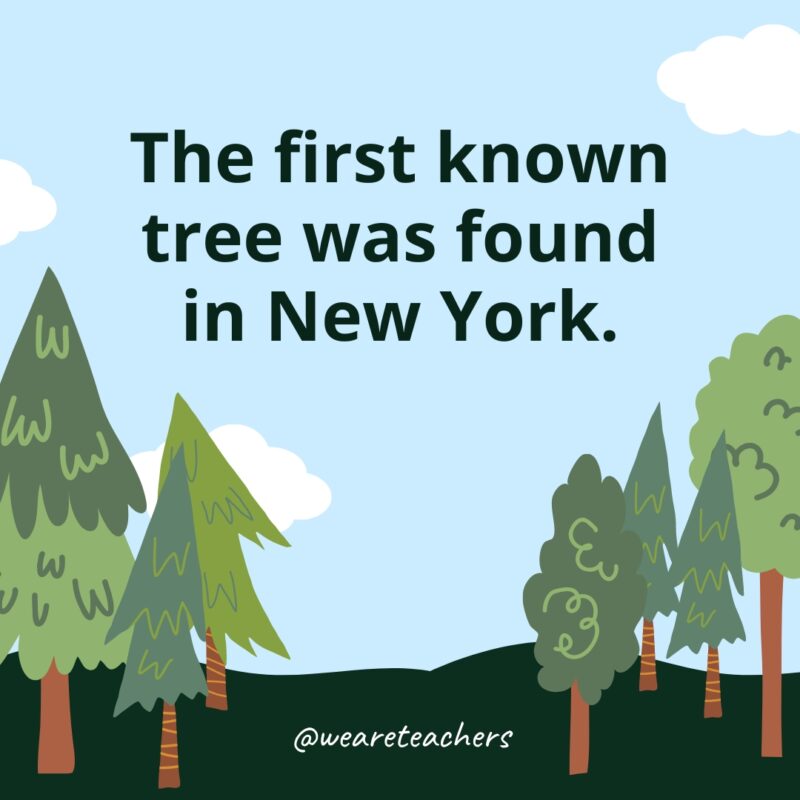
This fernlike plant was called the Wattieza. These now-extinct trees stood 26 feet tall and formed the first forests.
One tree can have the same cooling effect as 10 air conditioners.
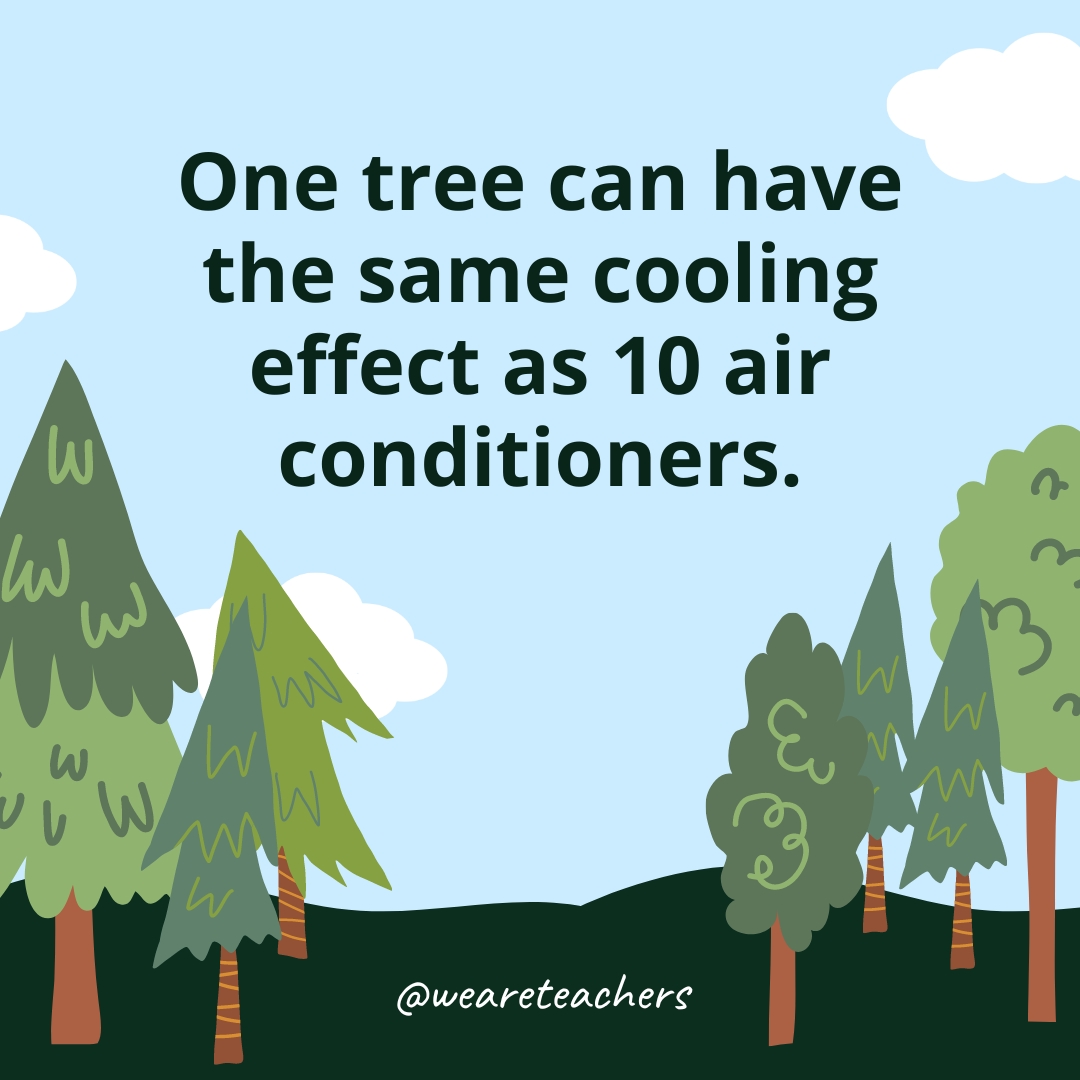
Trees help to regulate air temperature, which means we don’t need as many carbon emissions.
45% of all tree species are members of just 10 families.
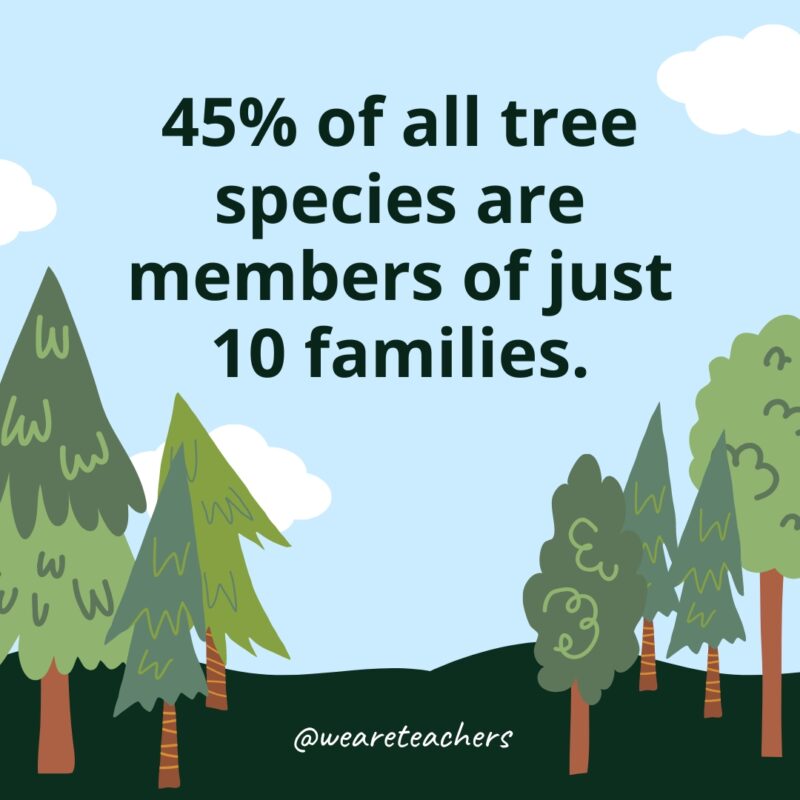
A few of the families are called Leguminosae (legumes), Myrtaceae (myrtle), and Malvaceae (mallows). Try saying that five times fast!
Trees can help direct us.
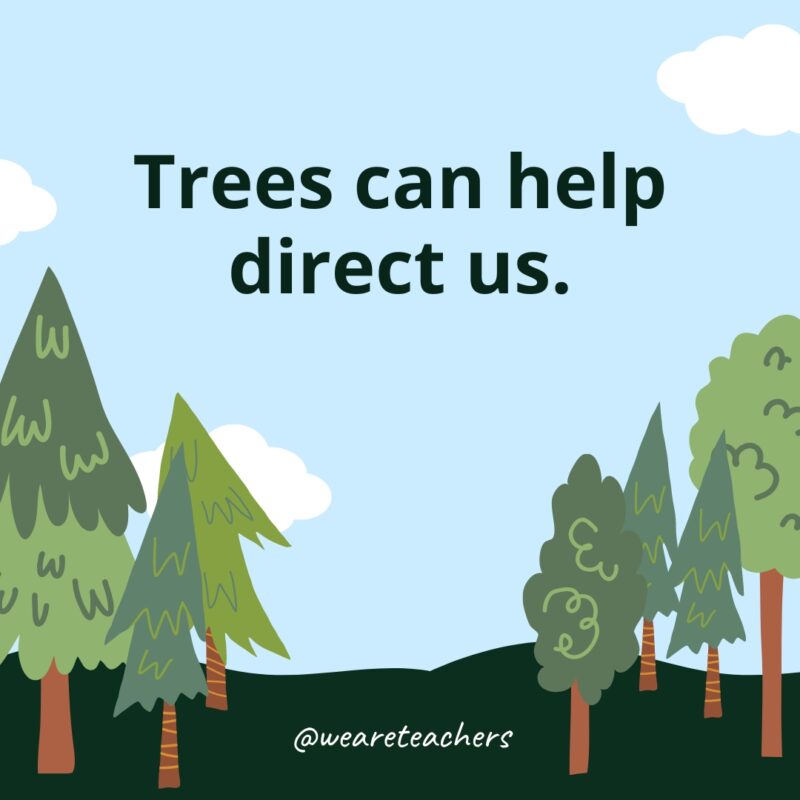
The branches of a tree show us where we are, much like a compass. For example, branches that point horizontal to the ground are pointing south. And moss grows on the north side of trees in the Northern Hemisphere and on the south side of trees in the Southern Hemisphere. So you’ll know which direction you’re going in based on where the moss is!
The leaves on a tree absorb sunlight.

This process is called photosynthesis and helps keep the tree nourished and healthy.
Brazil has the most species of trees.
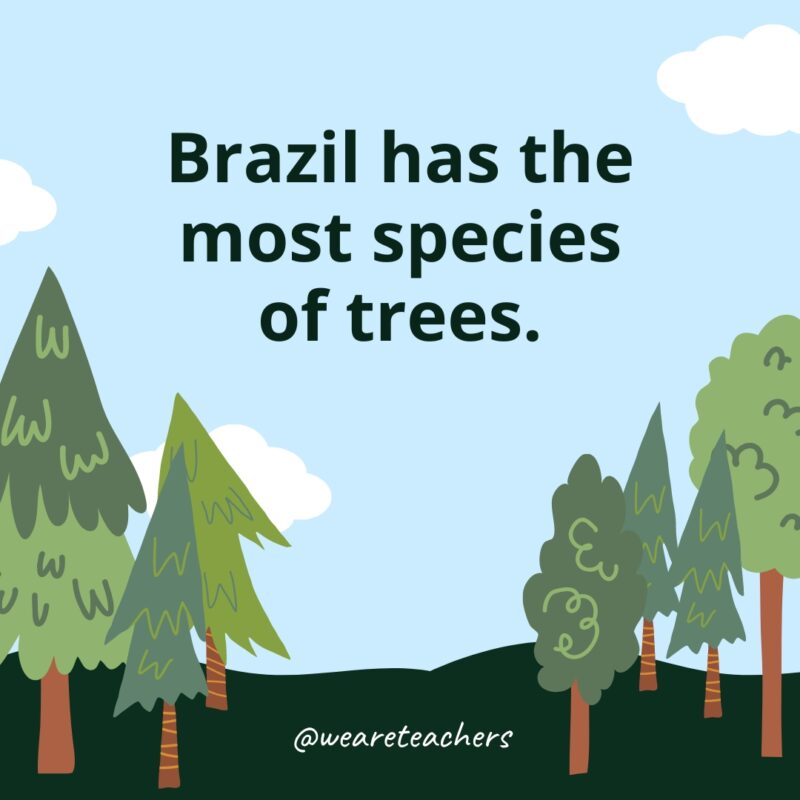
There are over 9,000 species of trees in Brazil.
The tallest tree on Earth is the California redwood.

Redwoods can grow to over 300 feet tall!
Trees help fight erosion.

Their leaf canopies reduce erosion caused by rainwater. Their roots also help to hold soil in place, which also helps fight erosion.
Some trees have been to the moon.
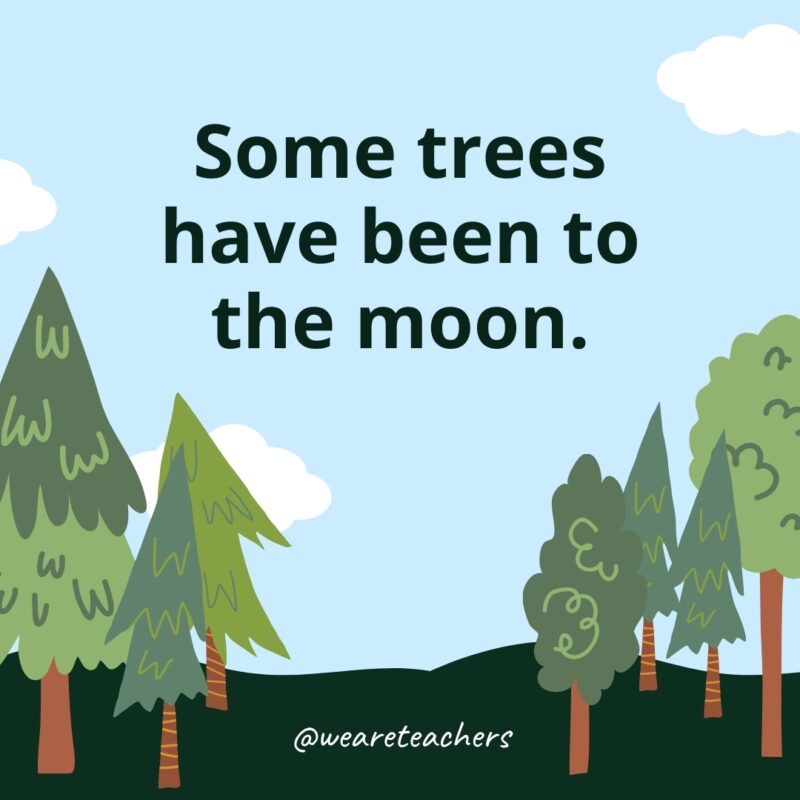
The Apollo 14 mission in 1971 took seeds to the moon to see if they would grow differently there. To everyone’s surprise, the trees grew the same way as they do on Earth.
A large oak tree can drop up to 10,000 acorns a year.
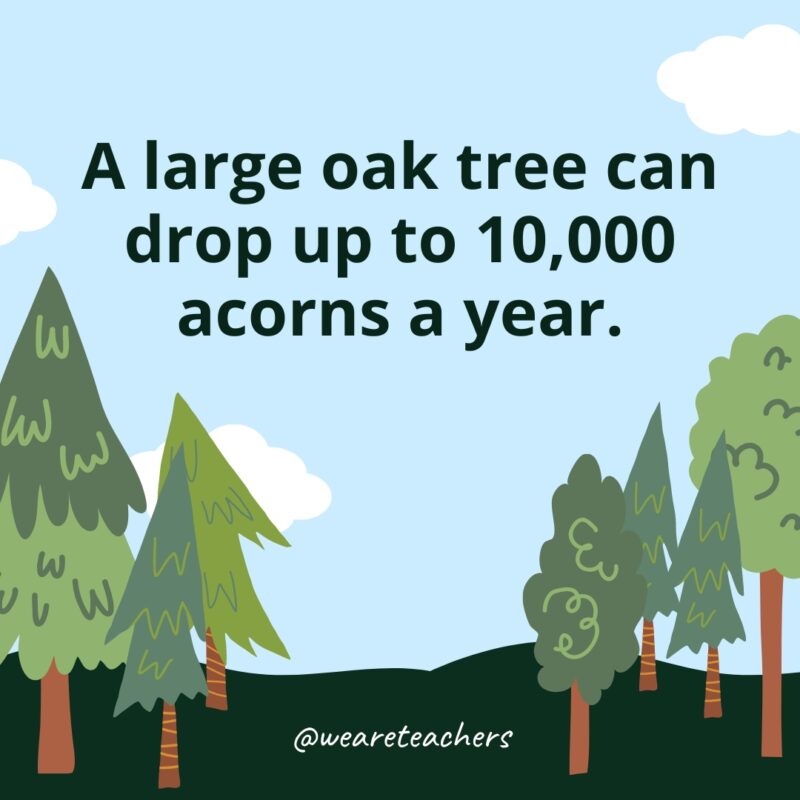
After the tree drops those 10,000 acorns, they are buried by squirrels and birds for them to eat in the future.
Weeping willow bark has a compound similar to pain-relieving medication.

When male deer grow new antlers, they look for weeping willows to help them with the itchiness of the process because the weeping willow bark has a compound that works similarly to aspirin.
When insects attack a tree, the tree fights back.
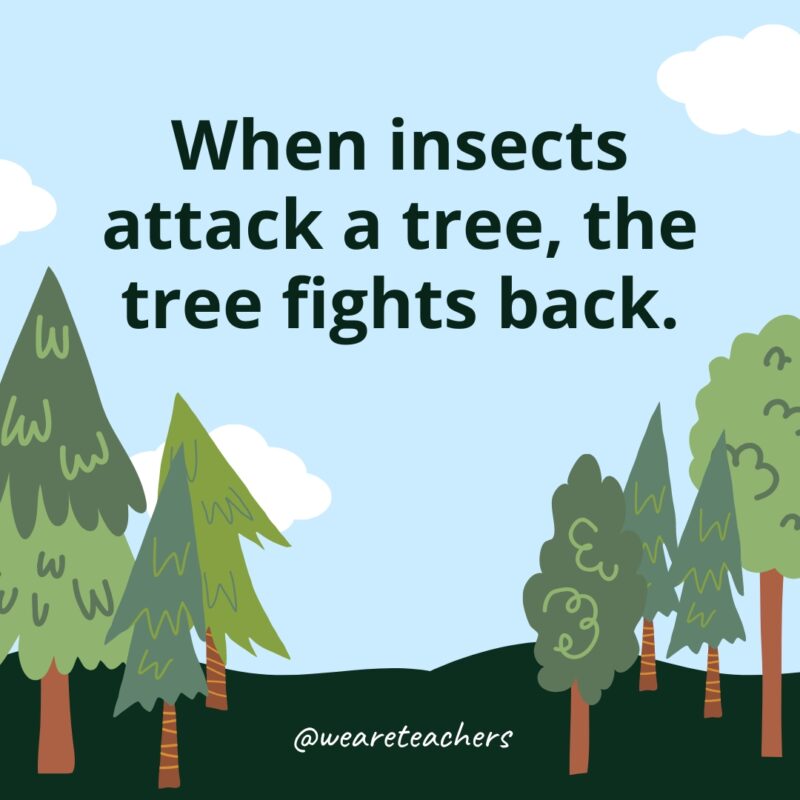
Trees can produce a chemical called phenolics, which keeps those pesky pests away. This helps them protect themselves.
Cherry blossom petals are edible.
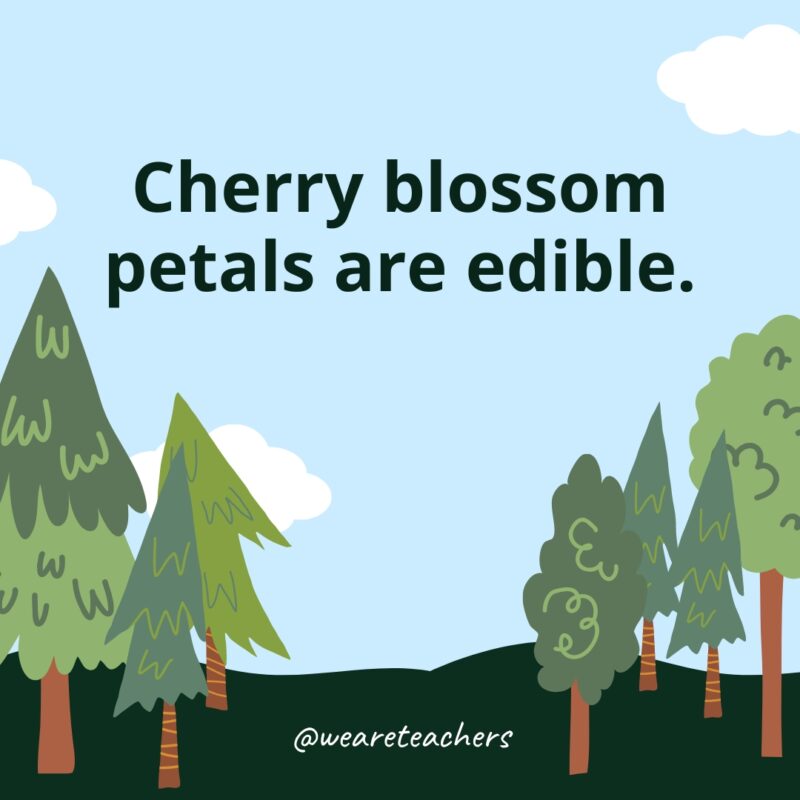
Commonly found in Japan, the cherry blossom trees produce a petal that is often used in teas and desserts.
Trees and fungi have a symbiotic relationship.

Fungi reside on the roots of the tree, which helps the tree absorb more nutrients and water from the soil. The trees then help the fungi by providing sugars they absorbed from photosynthesis.
Dead trees serve an important purpose.
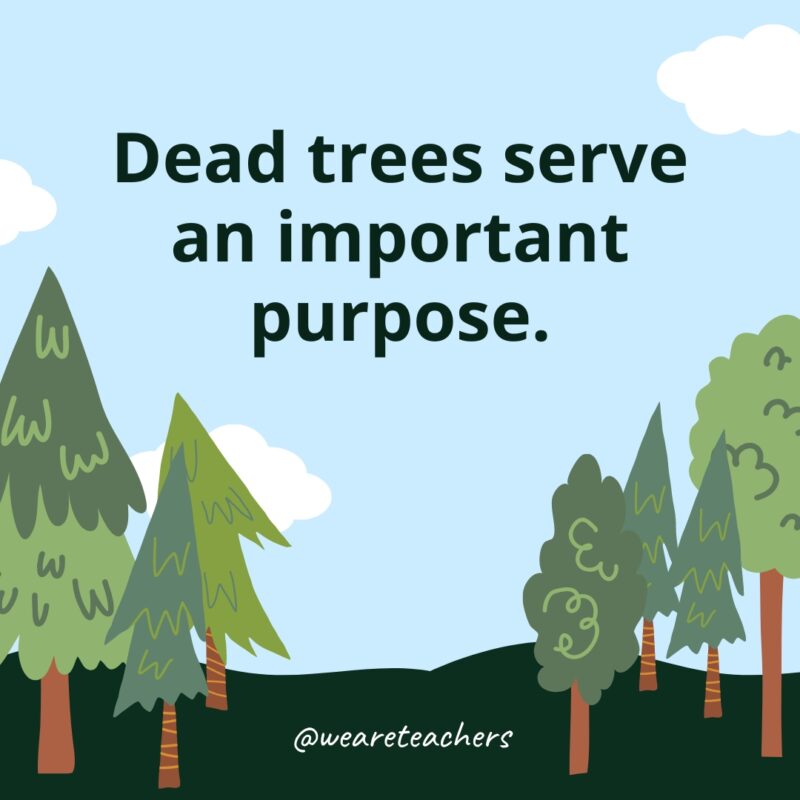
Believe it or not, dead trees play an important role in the ecosystem. The dead wood creates a source of nitrogen and microhabitats for wildlife. This includes insects, birds, and mosses.
Oak trees are sacred in many cultures.
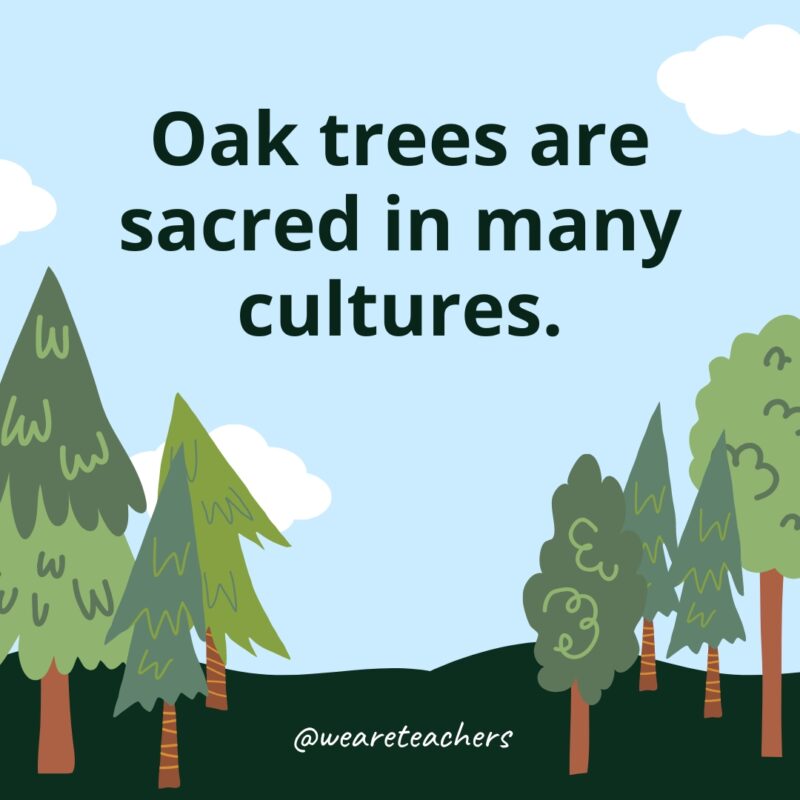
People regard the oak as the sacred tree of Zeus in Greek mythology.
There are nearly 400 billion trees in the Amazon rainforest.
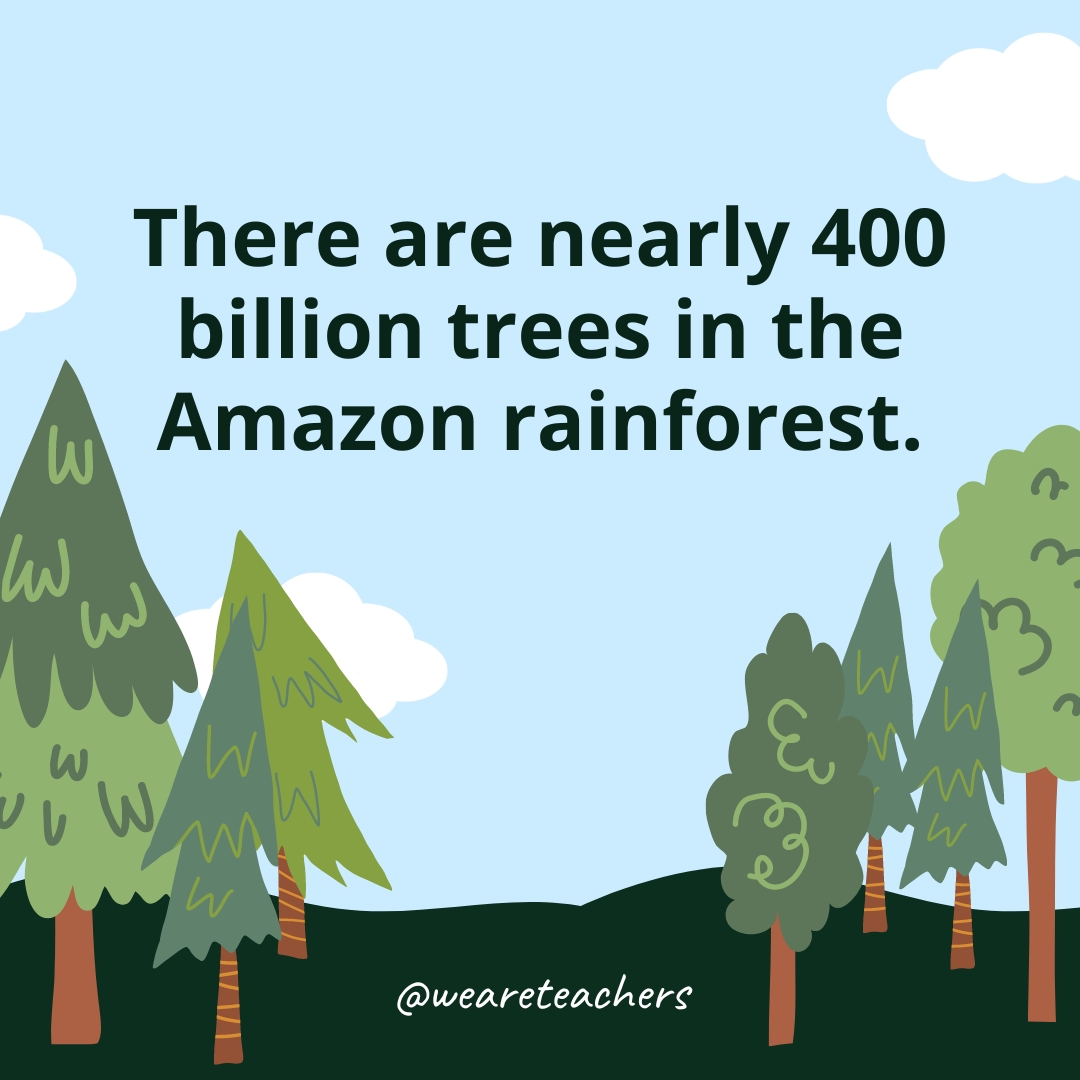
The Amazon is home to nearly 400 billion trees in 6.7 million square kilometers (2.6 million square miles). All those trees influence the rain cycles in the Amazon by releasing 20 billion tons of water into the air each day.
Trees didn’t exist for the first 90% of Earth’s history.
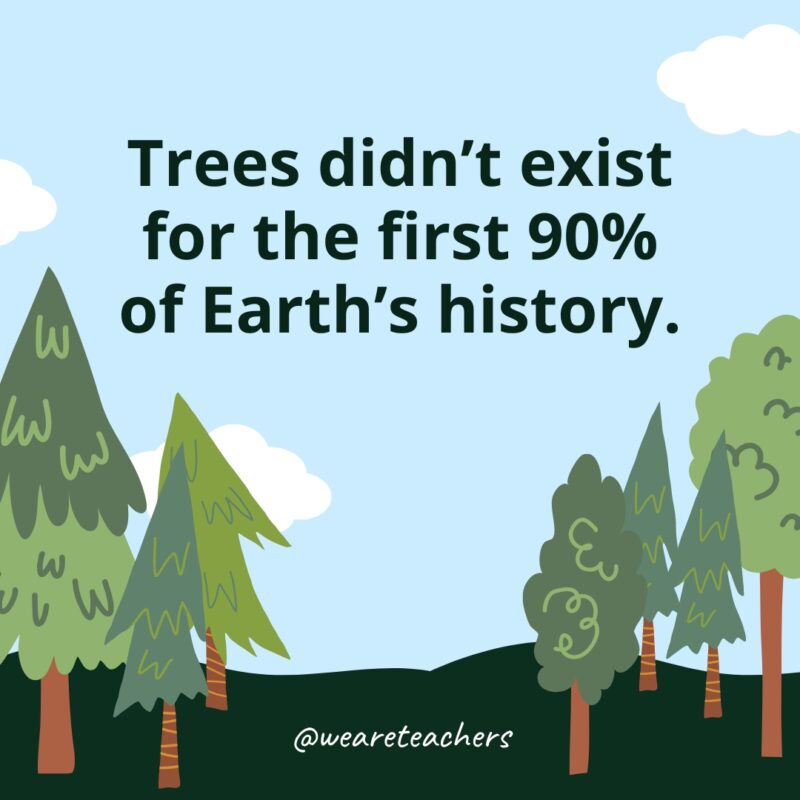
Although Earth is 4.5 billion years old, trees weren’t around for much of its history. Also for much of history, plants only grew a few feet off the ground.
Deforestation kills 15 billion trees each year.

Deforestation is the act of cutting down and clearing forested land.
The dynamite tree has fruit that explodes when it’s ripe.

These fascinating trees also have spikes and toxic sap. People sometimes refer to this tree as monkey no-climb and the sandbox tree.
Eucalyptus trees are koalas’ main source of food.
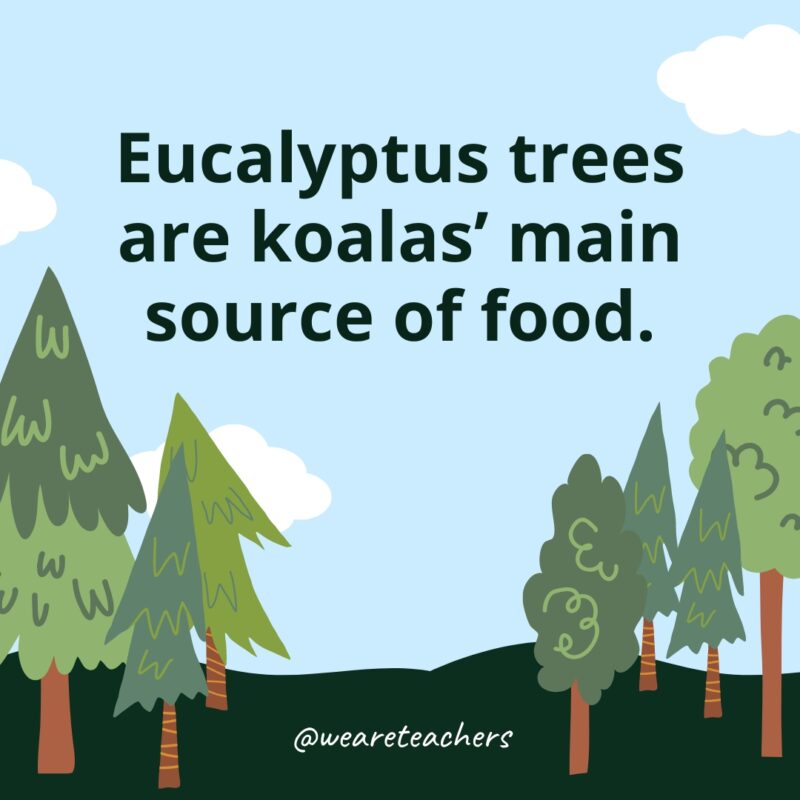
There are over 900 species of eucalyptus trees in Australia.
Apple trees don’t produce their fruit for four to five years.
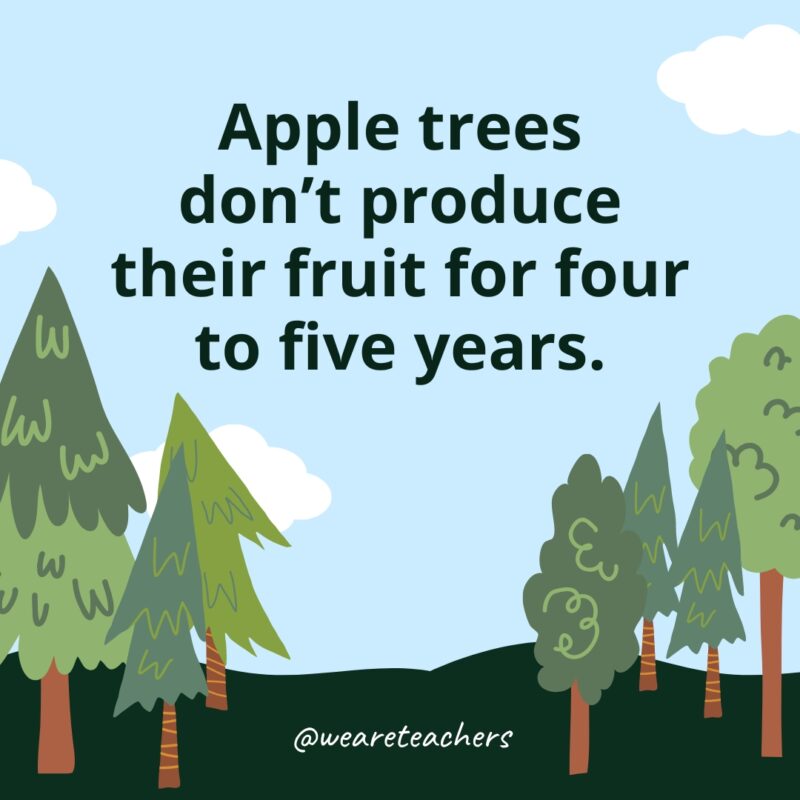
The apple tree originated in Southeast Asia.
Trees cut down noise pollution.
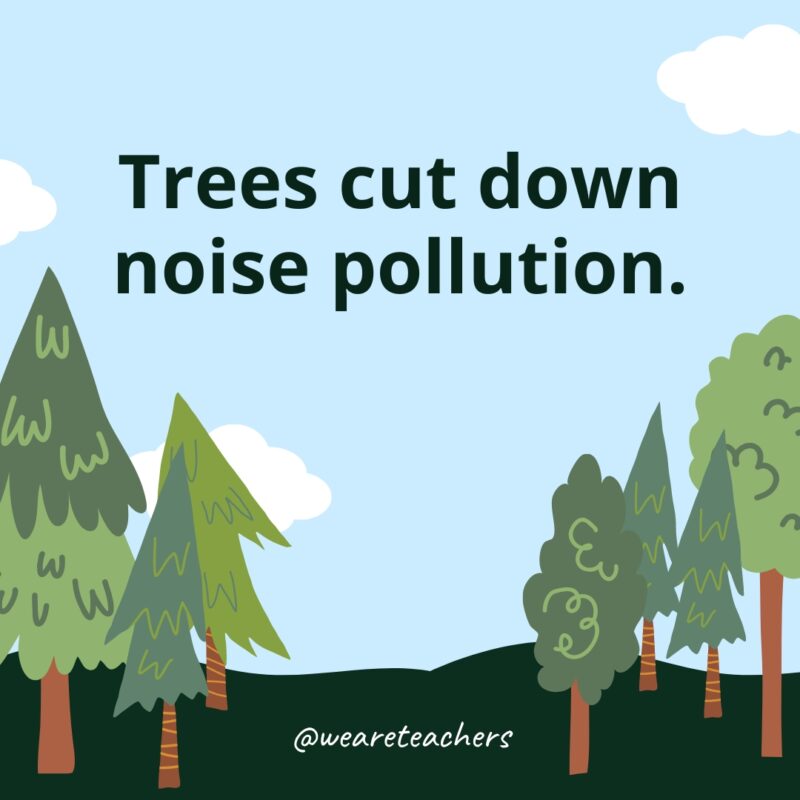
Trees can intercept sound waves and change their behavior based on the sound. Also, trees typically absorb more high-frequency sounds than low frequency.
At least 4 billion trees are cut down each year to make paper.
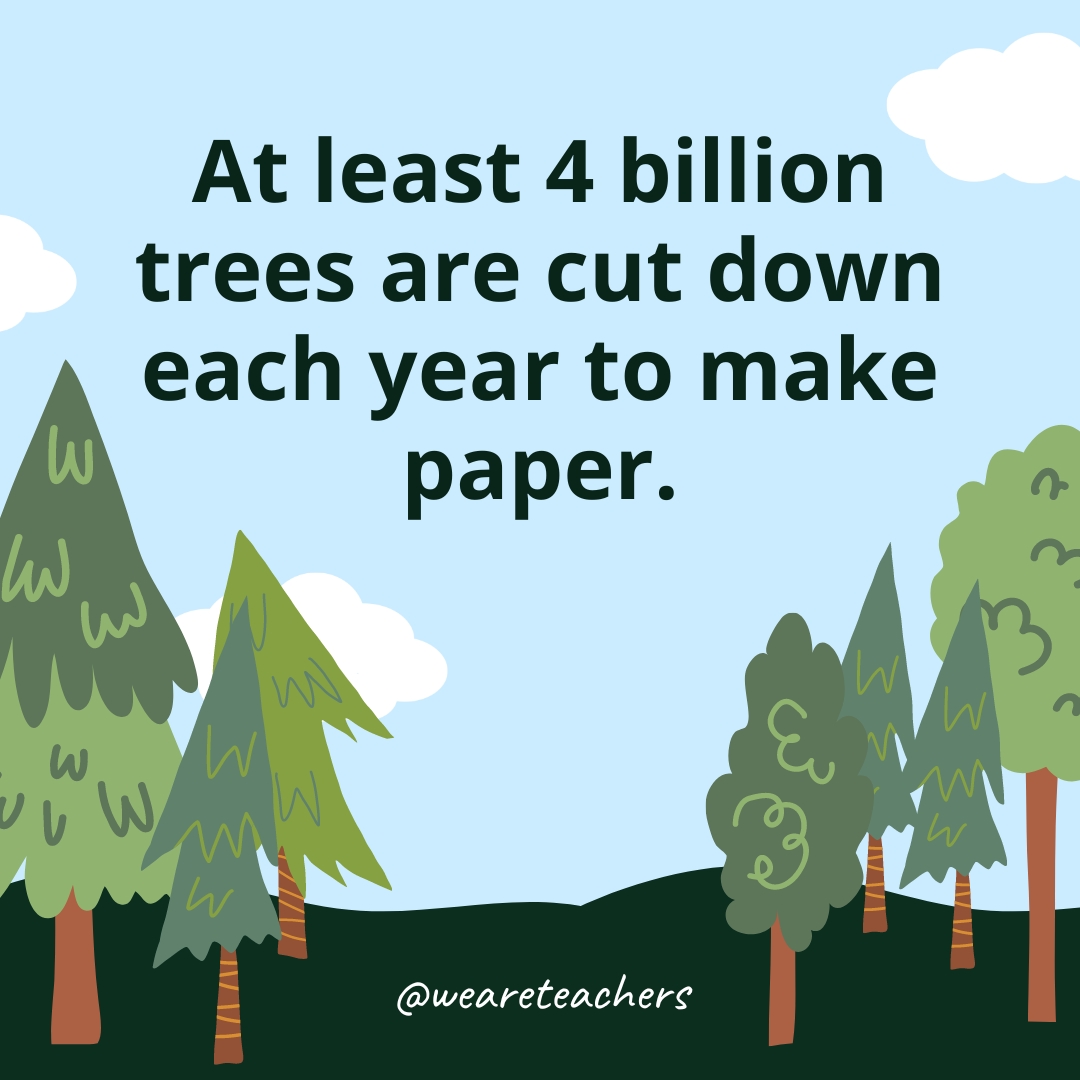
Another reason to go paperless, an estimated 4 billion to 8 billion trees are cut down each year to turn into paper.
Trees can communicate with each other.
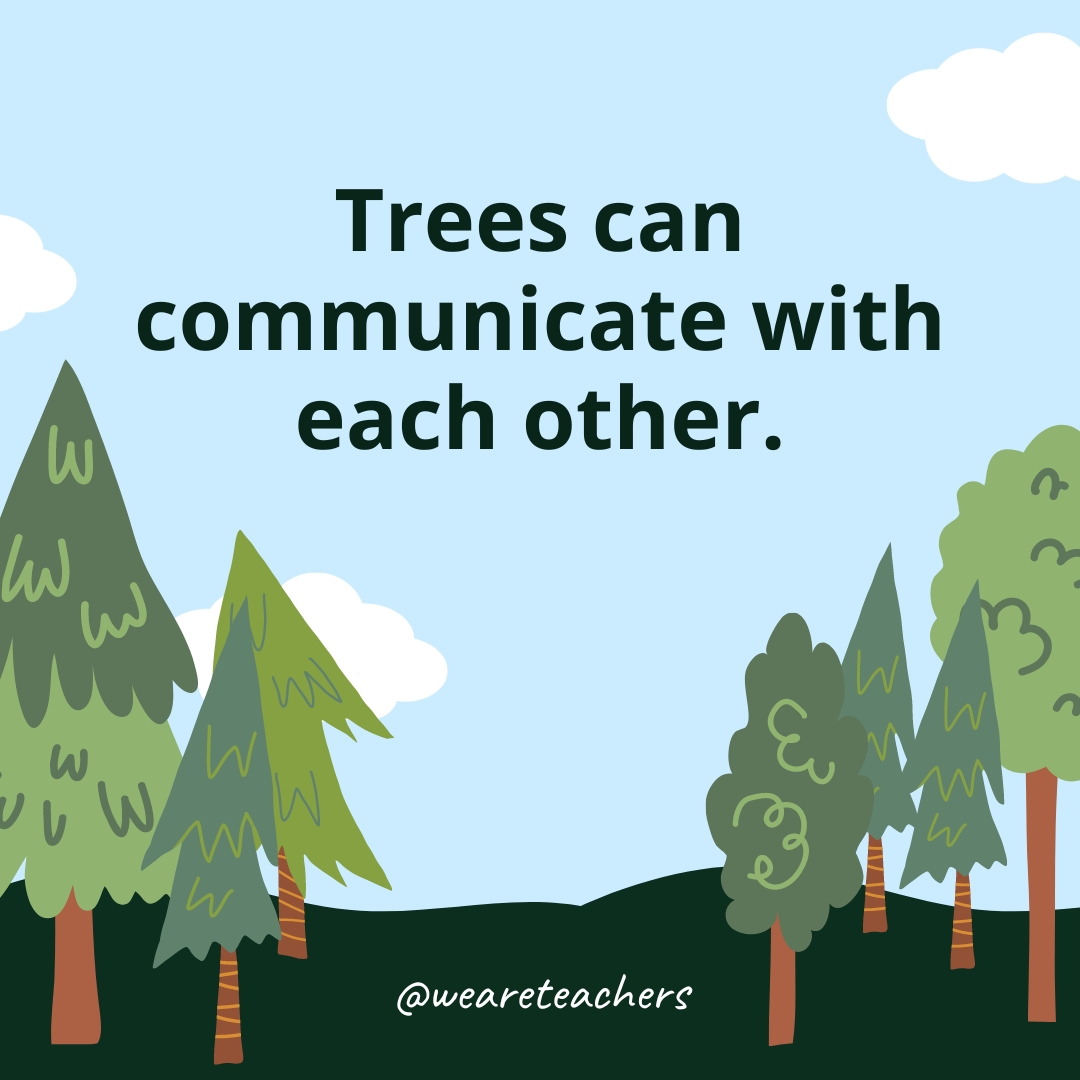
Trees can let other trees know there is danger, like a pest attacking one tree, so they can start their own defense. For example, willow trees emit chemicals when being attacked by webworms. The Wood Wide Web is an underground fungal network that connects trees and plants. This is how the plants communicate and exchange nutrients.
Trees help limit climate change.
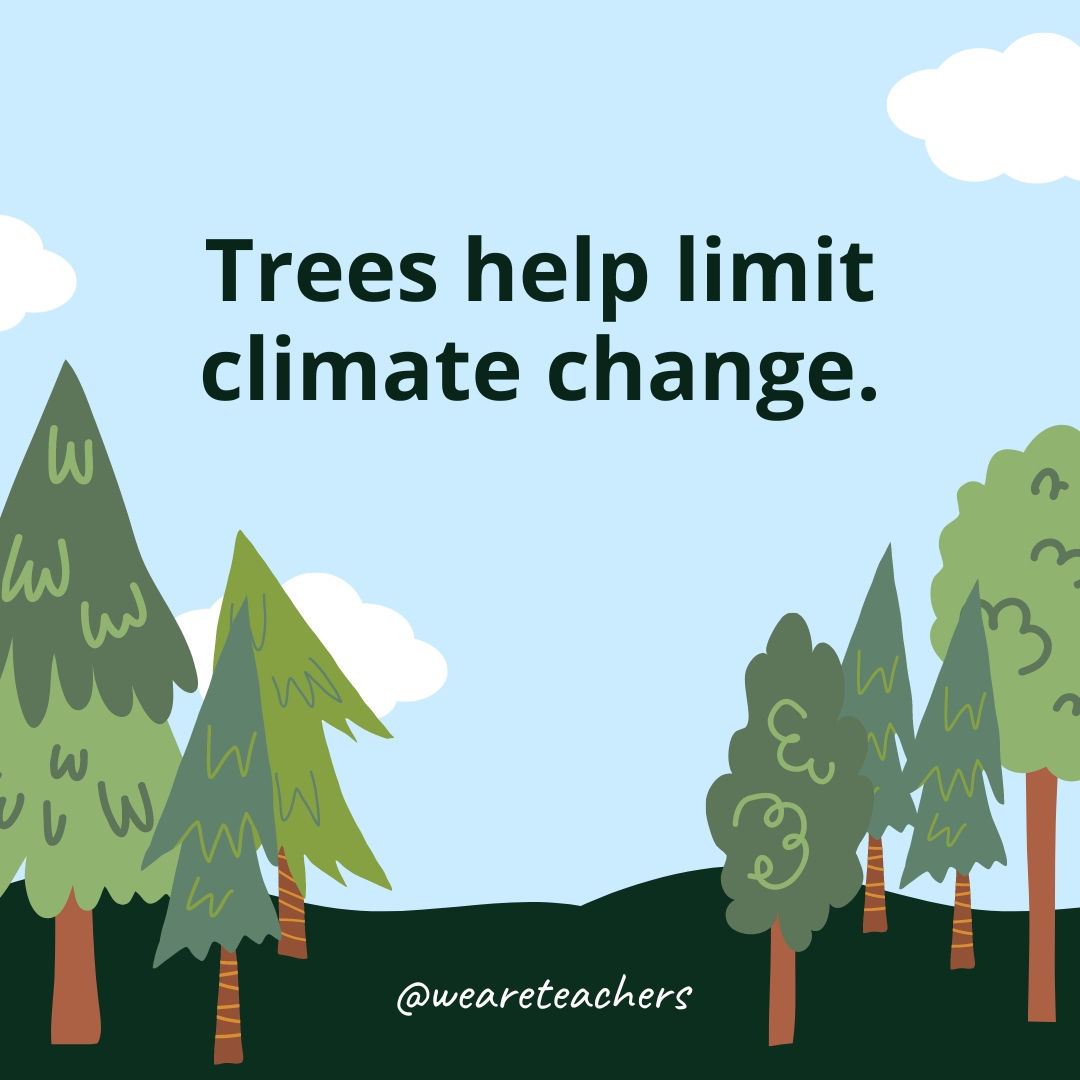
A mature tree absorbs more than 48 pounds of carbon dioxide, stores the carbon, and releases oxygen. In Chicago alone, trees remove more than 18,000 tons of air pollution each year.
Dendrochronology is the science of dating events by studying tree rings.
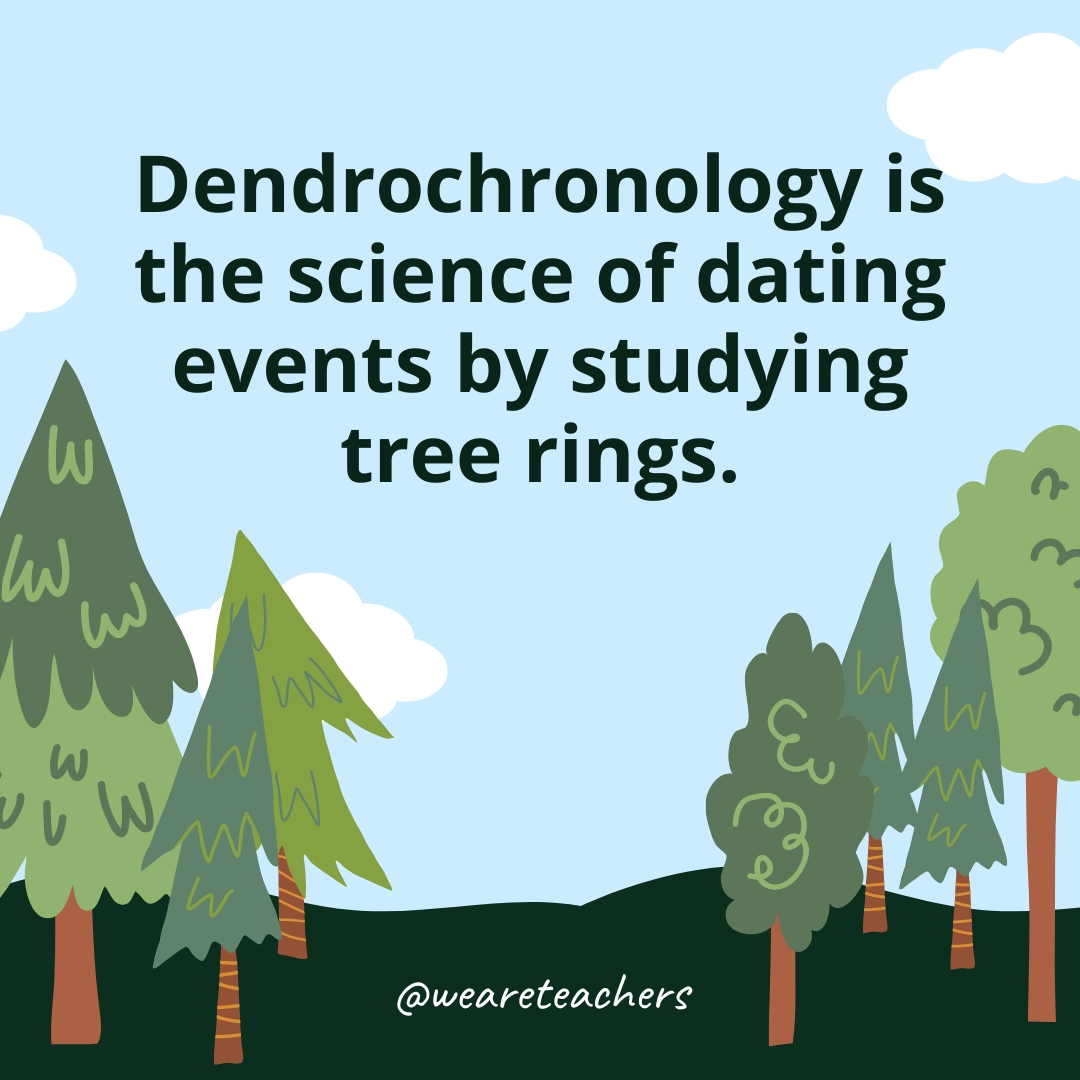
Dendrochronology can tell us more about people of the past as well as the histories of volcanic eruptions, earthquakes, forest fires, climate, and so much more.
Trees grow from the top.
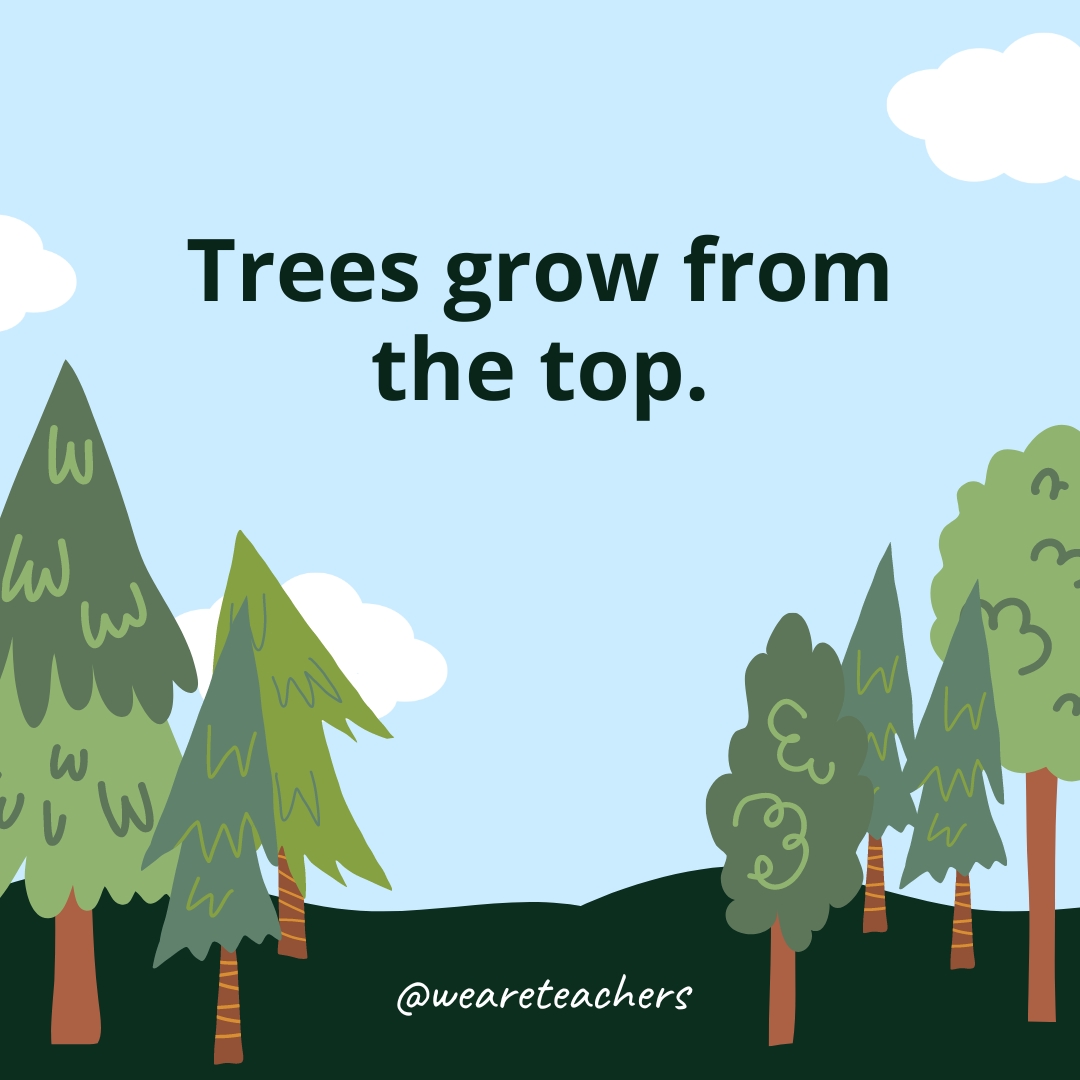
Cells at the ends of tree shoots form tissue called meristems, from where the trees grow taller. So branches stay at the same height, and a birdhouse will stay in the same place even as the tree grows.
Different parts of a tree grow at different times of the year.
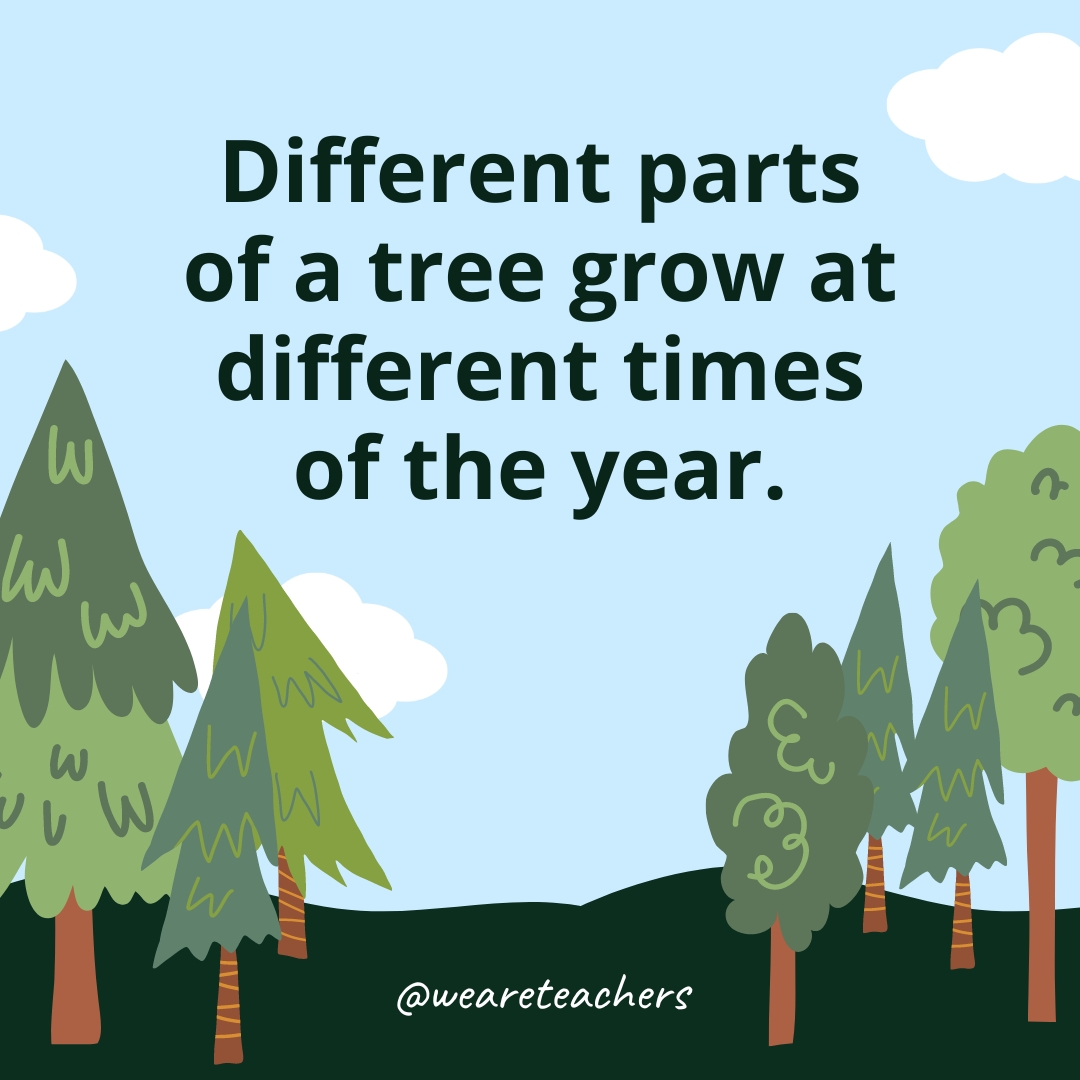
Trees grow foliage during the spring, tree trunks grow in summer, and roots grow in fall and winter.
The smallest tree is 6 cm (2.4 inches) tall.
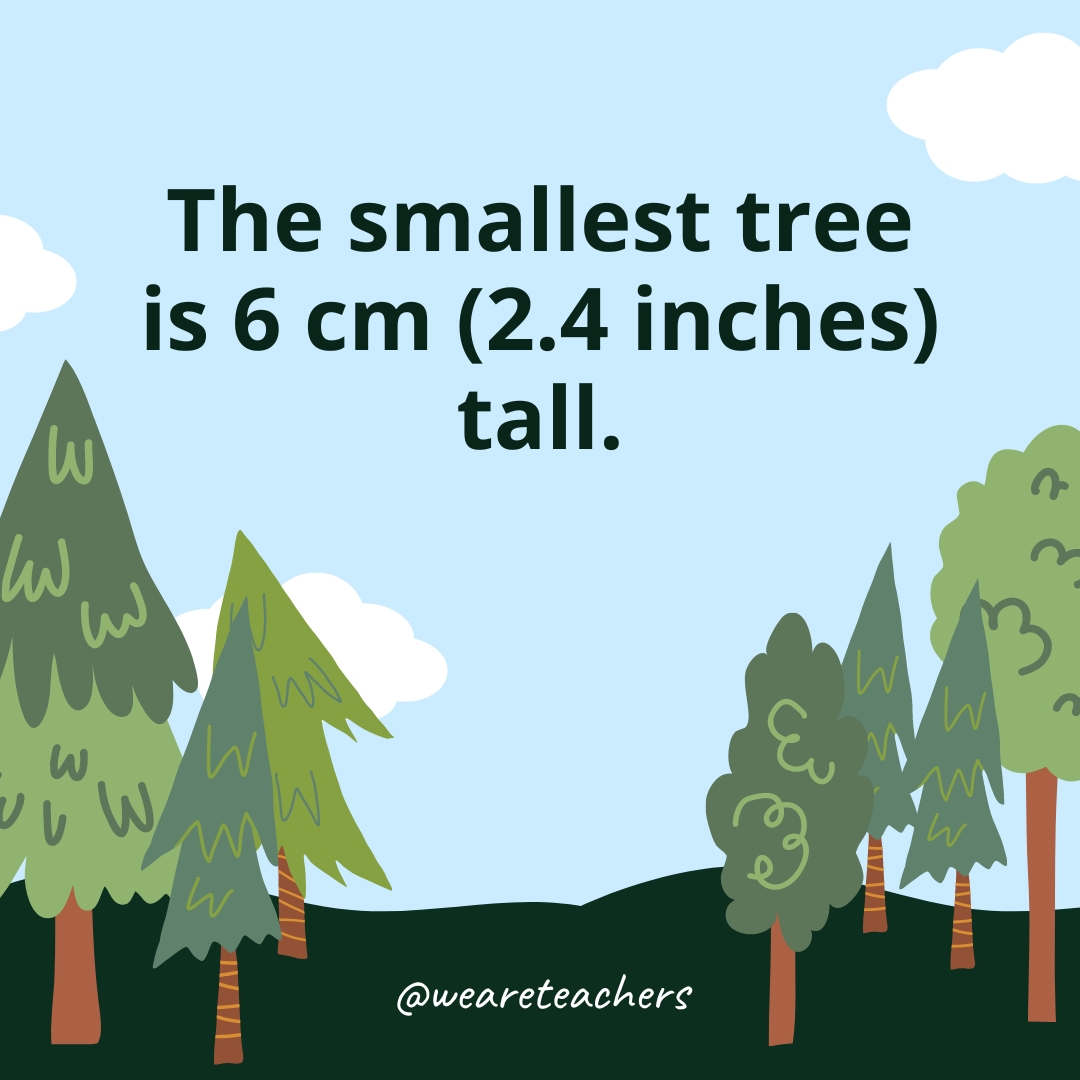
The dwarf willow is the smallest tree, growing between 1 and 6 centimeters tall. It lives in cold, high places, and some debate whether it’s a tree at all.
The rainbow eucalyptus has beautiful rainbow bark.
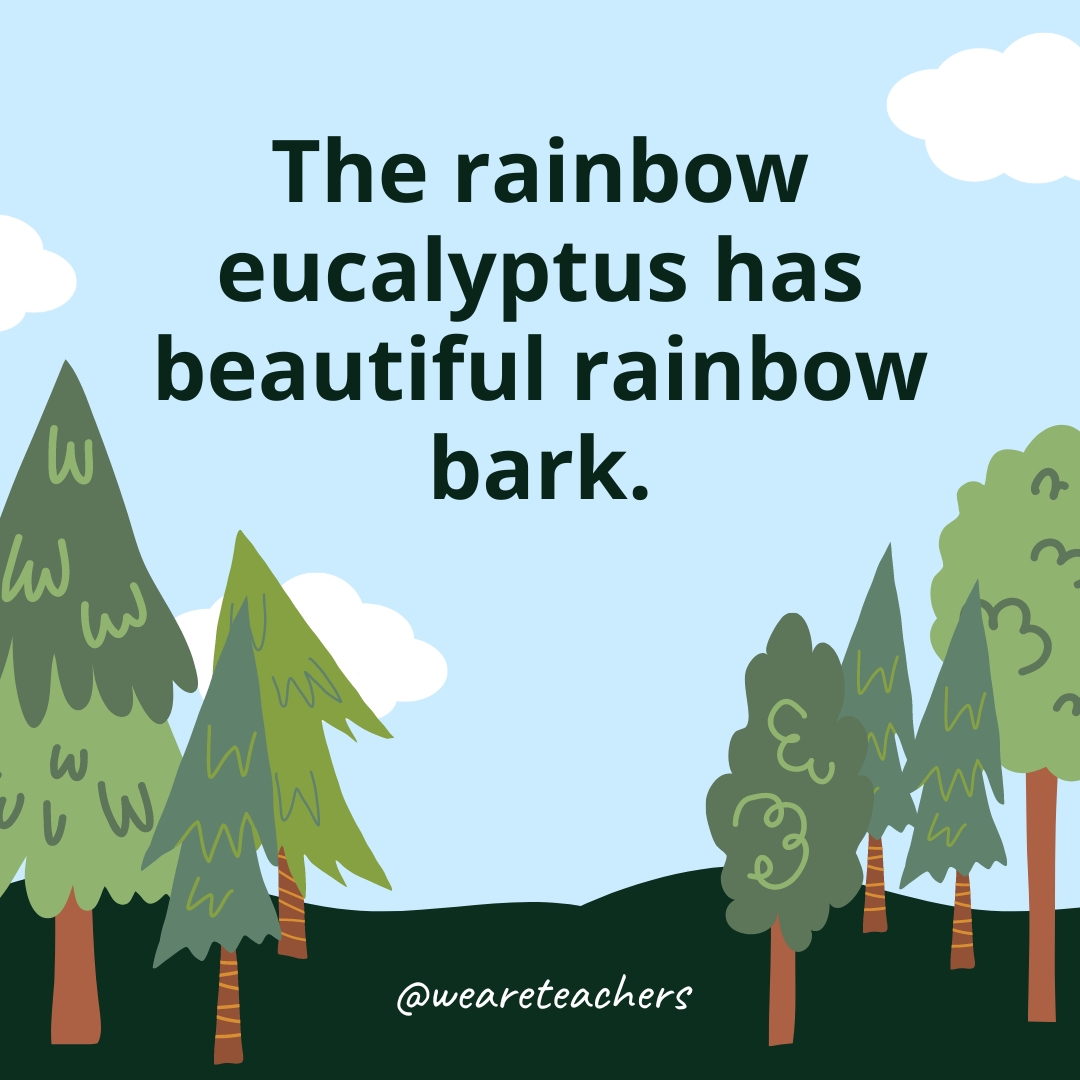
The rainbow eucalyptus in Southeast Asia and Papua New Guinea has smooth orange bark that sheds unevenly, leaving rainbow strips of red, orange, yellow, blue, and purple.
It takes seven or eight trees to provide enough oxygen for one person for one year.
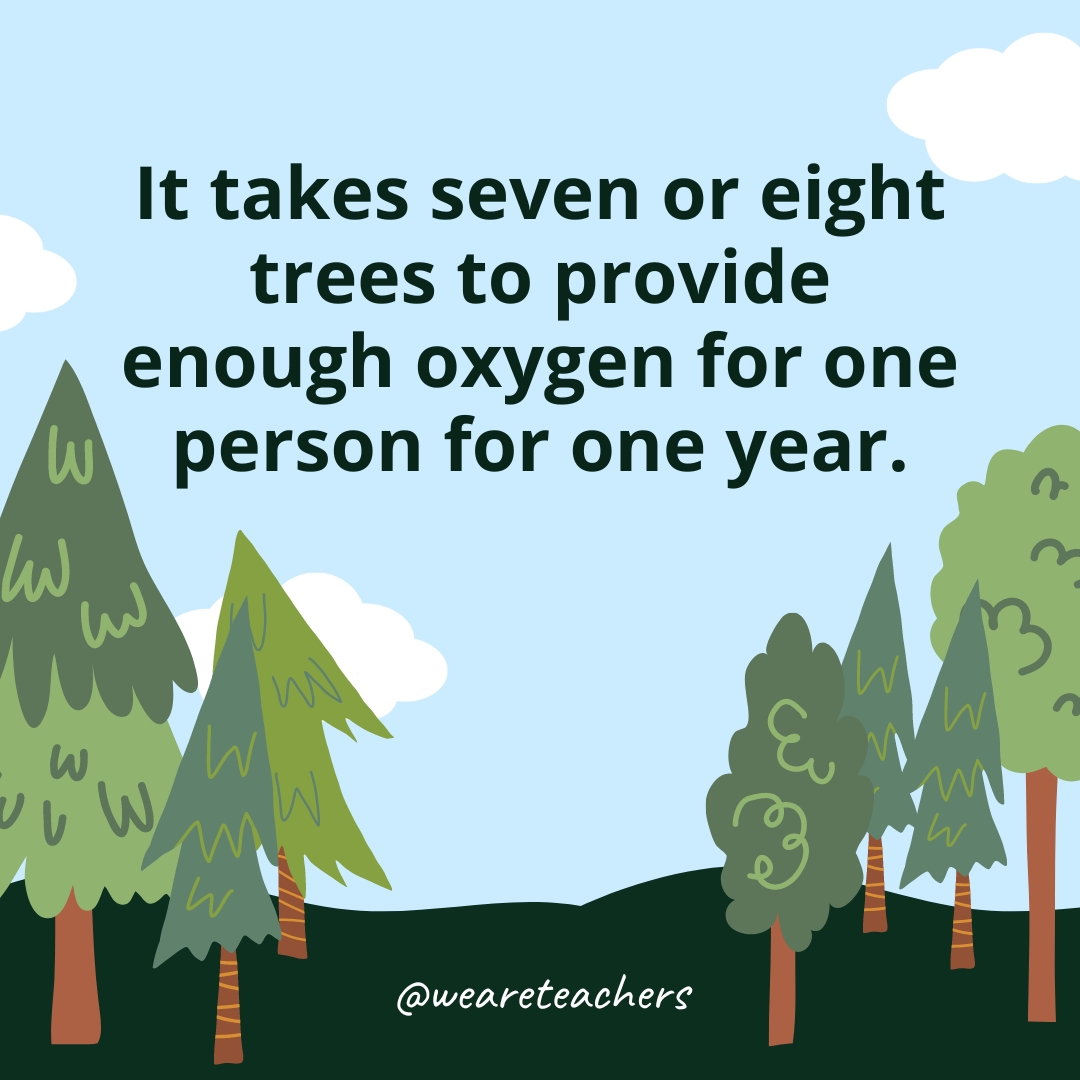
Good thing trees produce more oxygen than they use.
Most tree species live in only one area of the world.
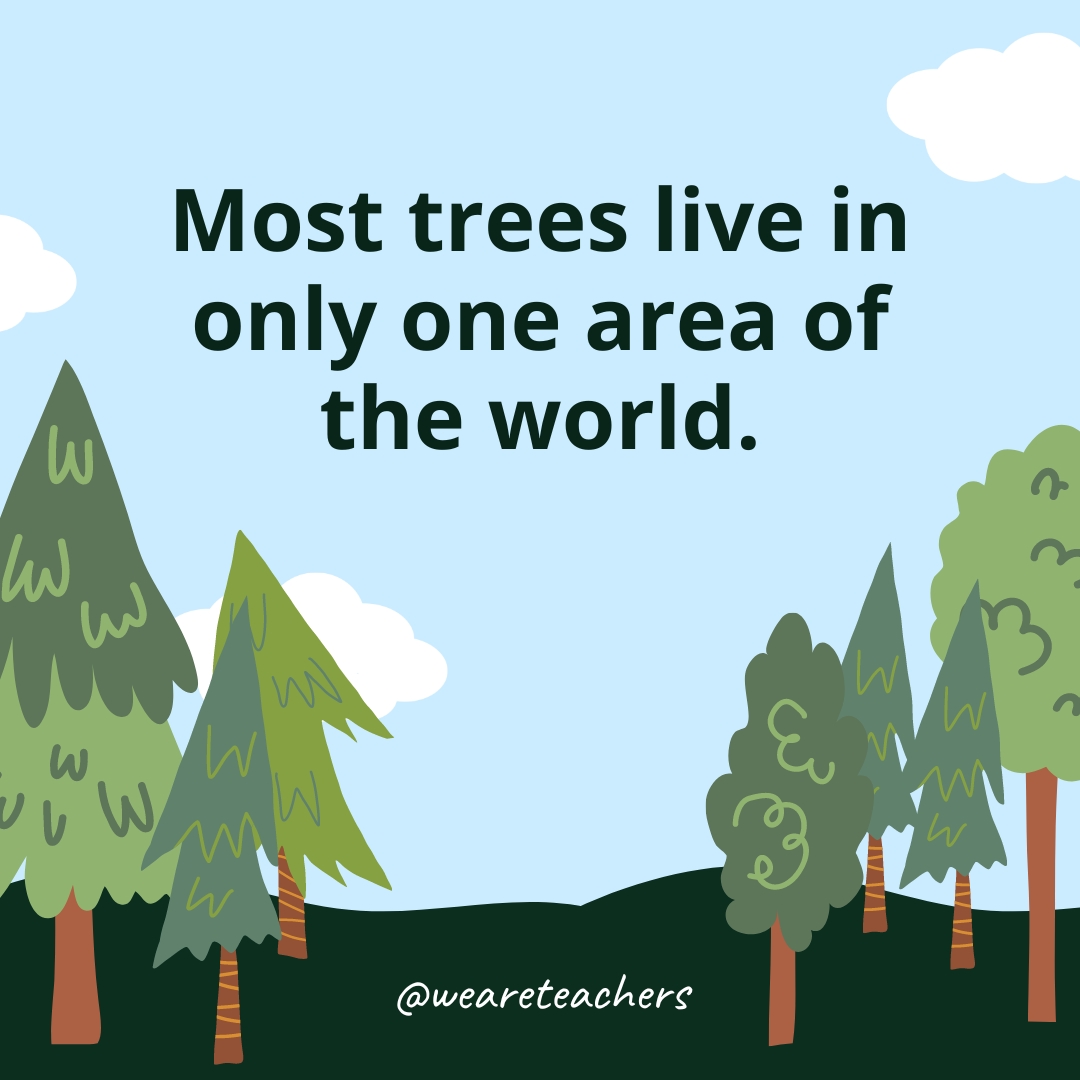
Fifty-eight percent of trees are single-country endemics, or they exist in one area. This means they are threatened by deforestation because they only have one habitat.
The Wollemi pine was around when dinosaurs were on Earth.
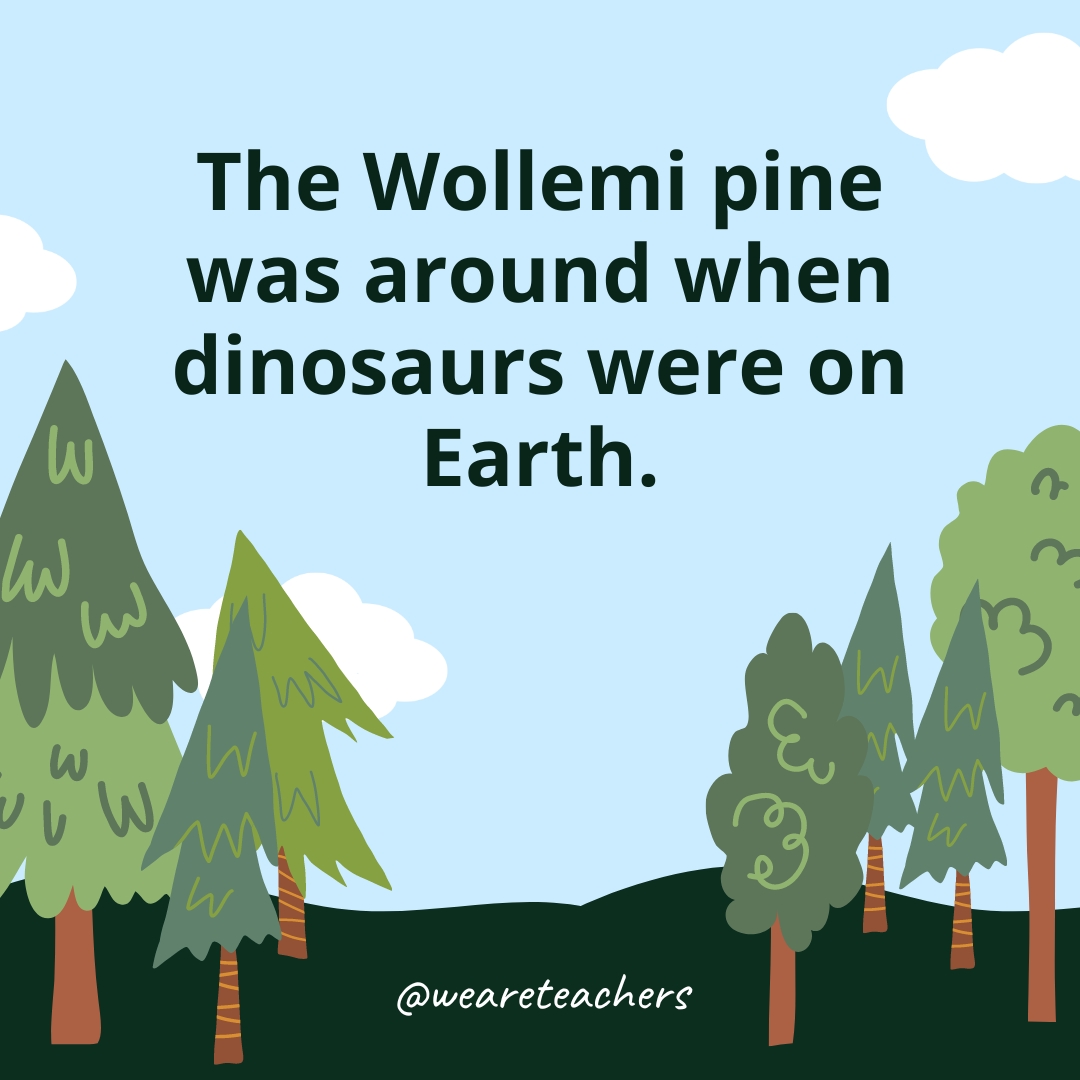
Wollemi or dinosaur trees are in Australia and thought to date back to the Jurassic period.
A fig tree in South Africa has roots that are 400 meters (1,312 feet) deep.
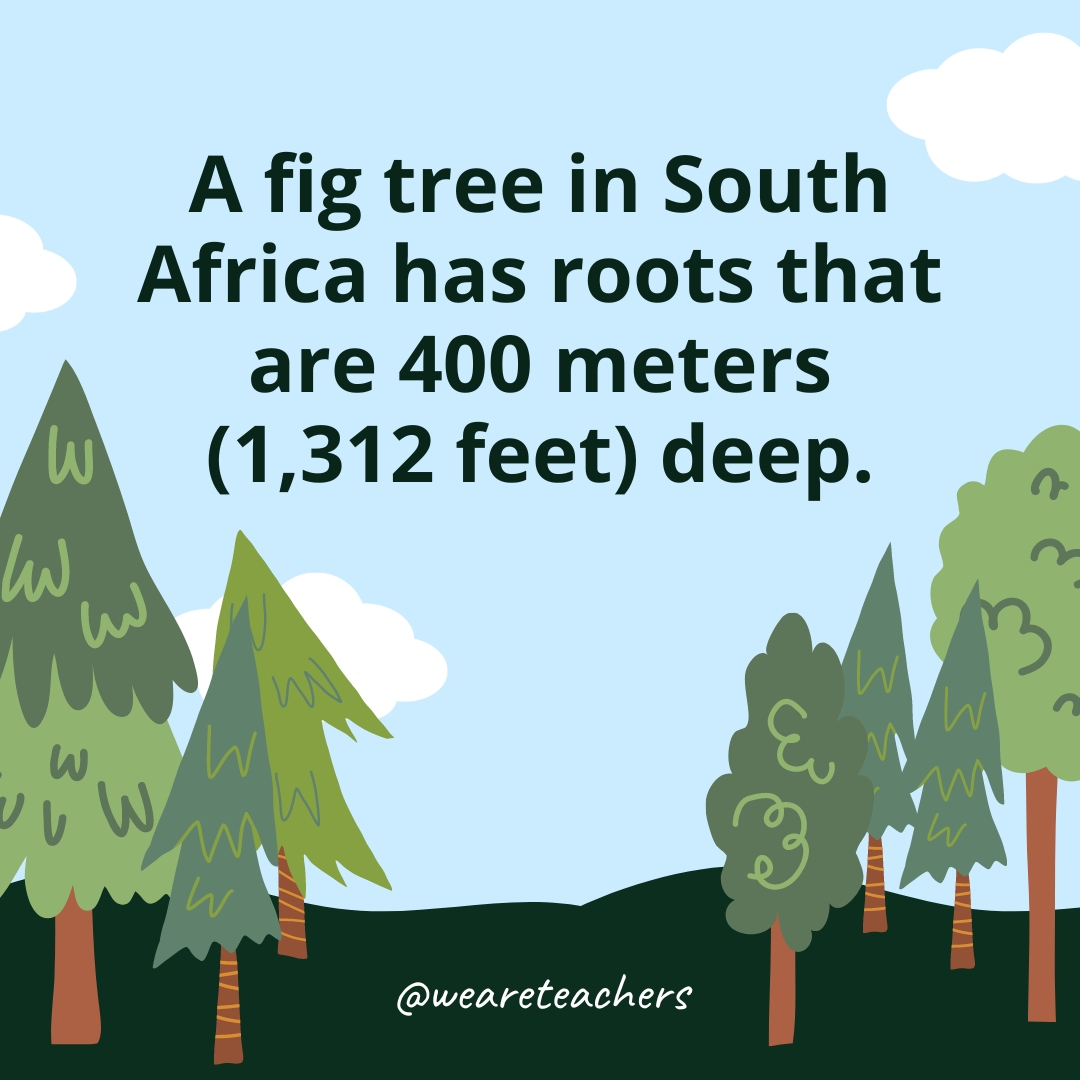
This tree in Echo Caves, South Africa, has roots that are deeper than the Eiffel Tower is high.
The Survivor Tree withstood the September 11 terrorist attacks.
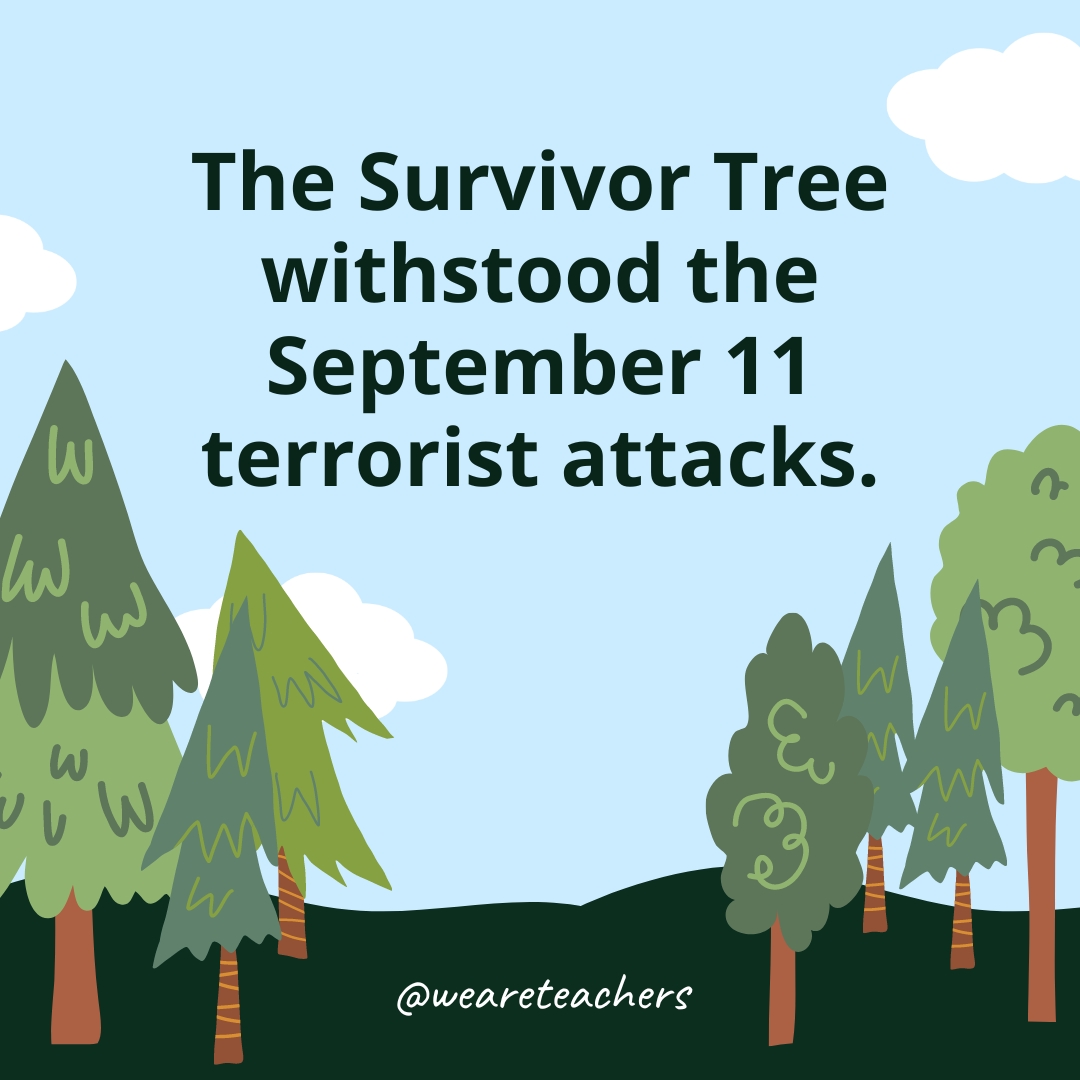
A Callery pear tree survived the attacks on 9/11 in New York City. It was damaged during the attacks and nursed to health in a nursery. You can see it at the National September 11 Memorial and Museum.
Forests cover one-third of the Earth’s surface.
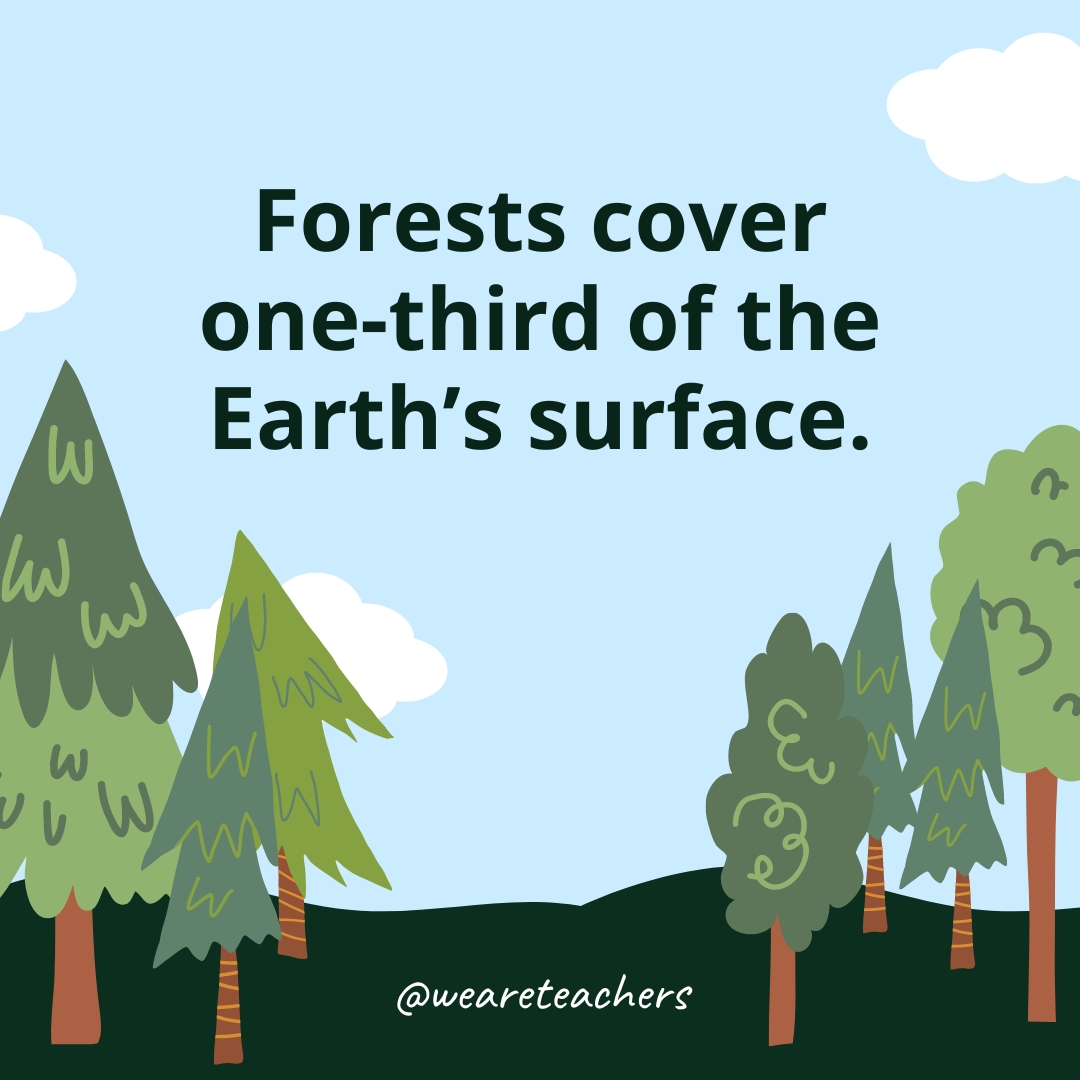
That’s more than 15 million square miles of trees.
It takes 40 gallons of sap to make 1 gallon of maple syrup.
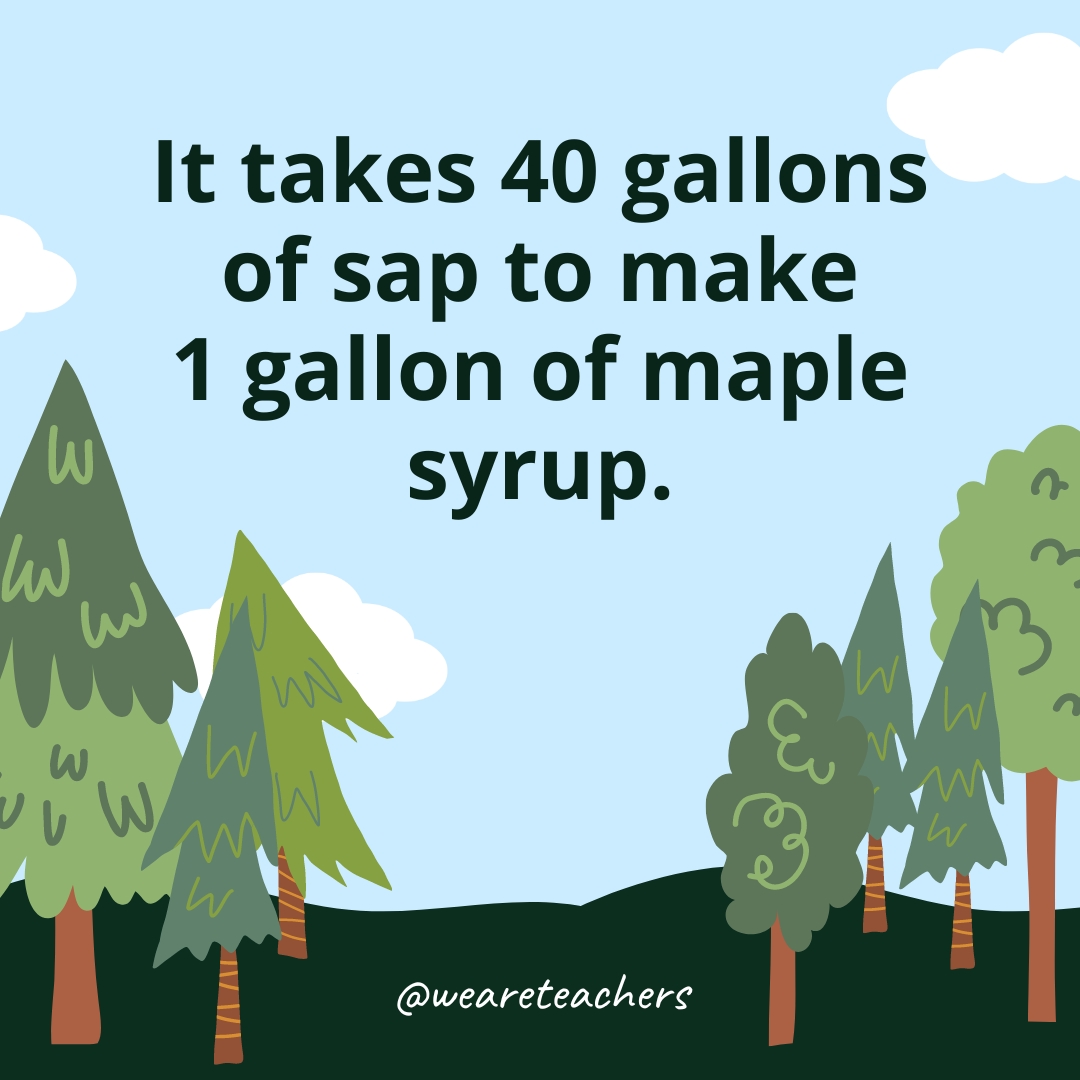
Maple syrup can be made from any species of maple tree, including sugar, black, red, and silver maple and box elder trees.
The Dragon’s Blood tree looks like it’s bleeding when cut.
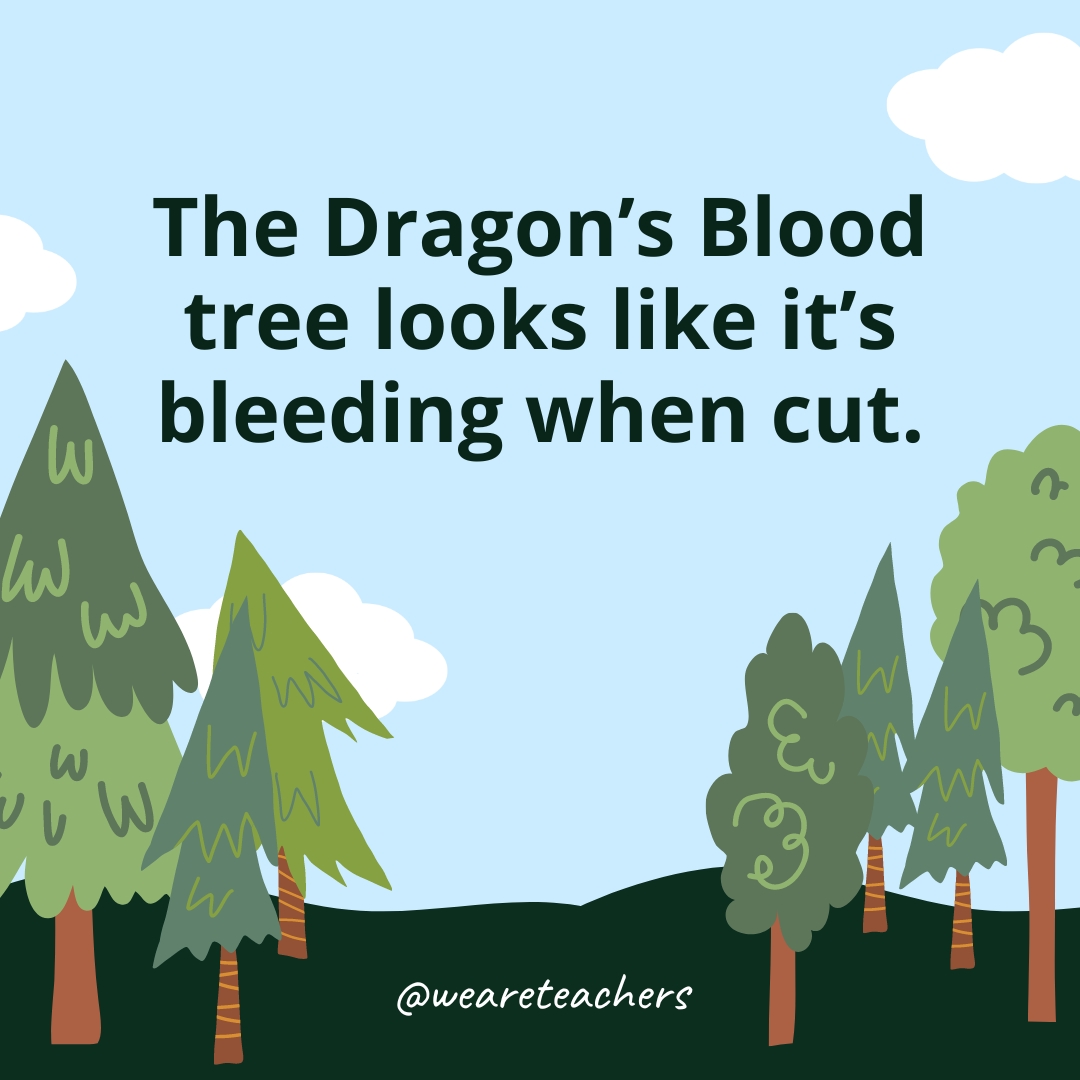
The Dragon Blood tree releases red sap that hardens into resin if it is injured, which makes it look like it’s bleeding.
Washington D.C.’s cherry trees were a gift from Japan.
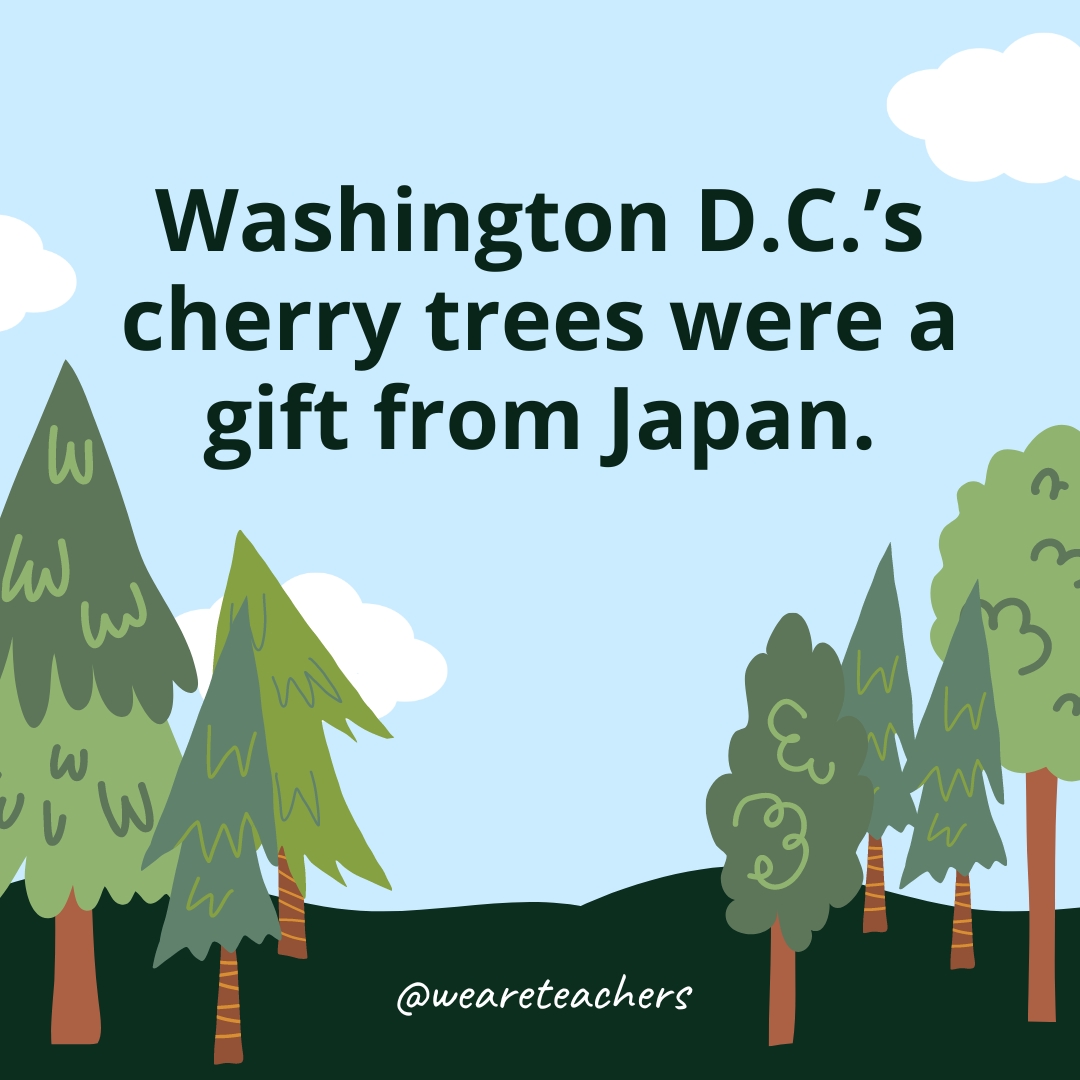
In 1912, the people of Japan gifted cherry blossom trees to the people of America. Now, the annual spring Cherry Blossom Festival celebrates the friendship between Japan and the United States.
The common juniper is the most populous tree in the world.
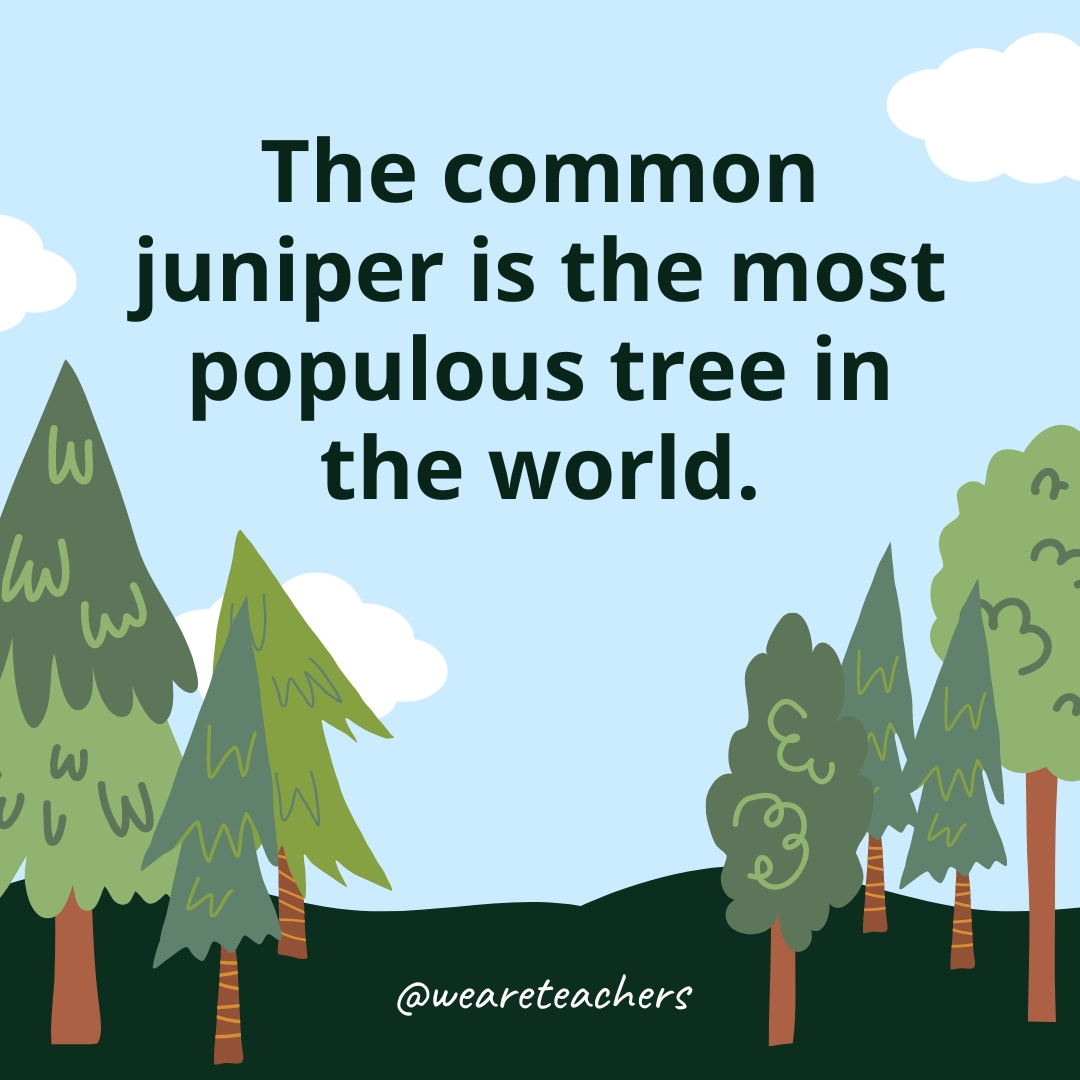
These trees can be found throughout the Northern Hemisphere.
Trees grow thicker bark in warm areas.
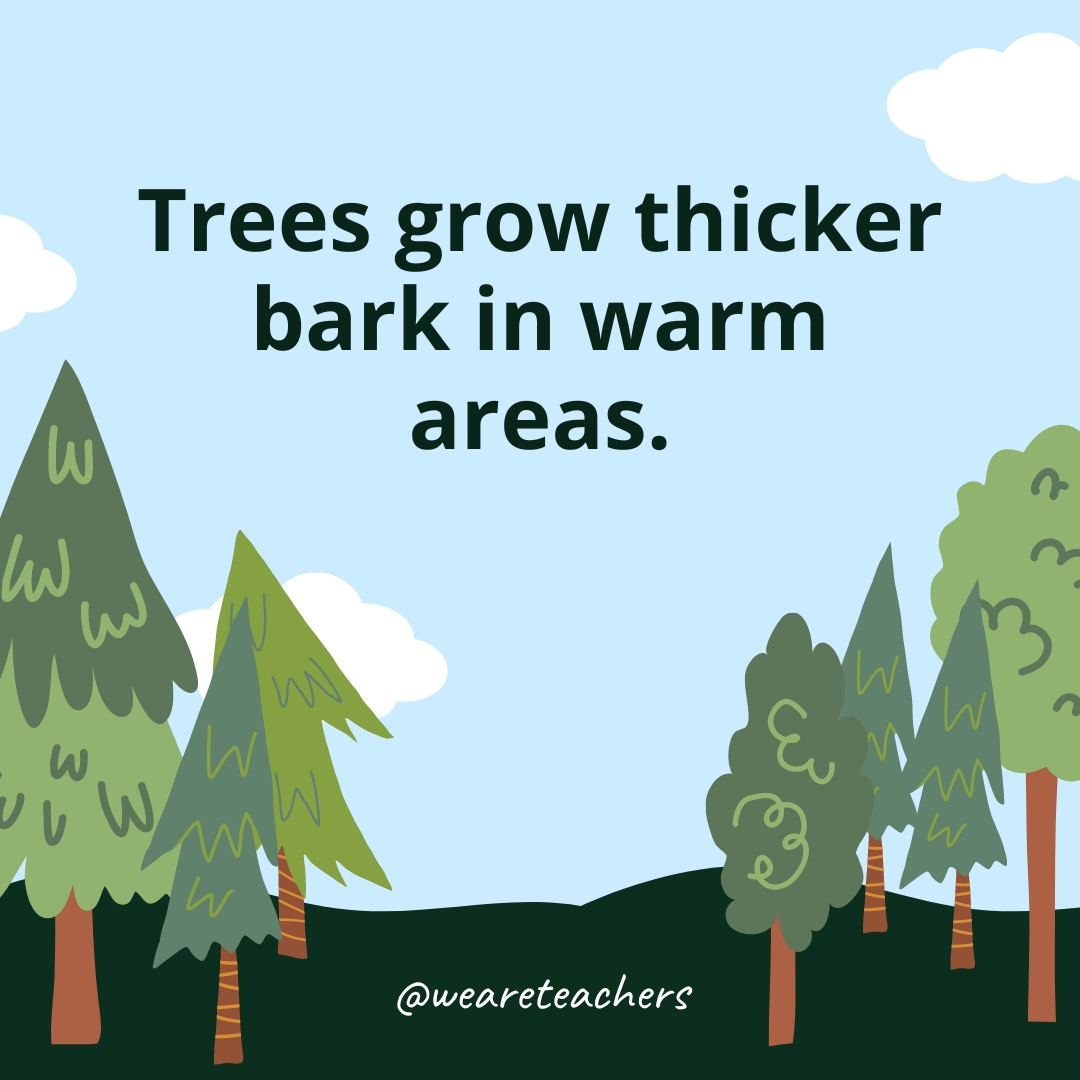
Trees that grow in warmer and more fire-prone areas grow thicker bark.
General Sherman is the largest tree in the world by volume.

General Sherman is a giant sequoia in California that’s 275 feet tall with 52,000 cubic feet of wood.
Urban forests are 2.9°F cooler than unforested urban areas.
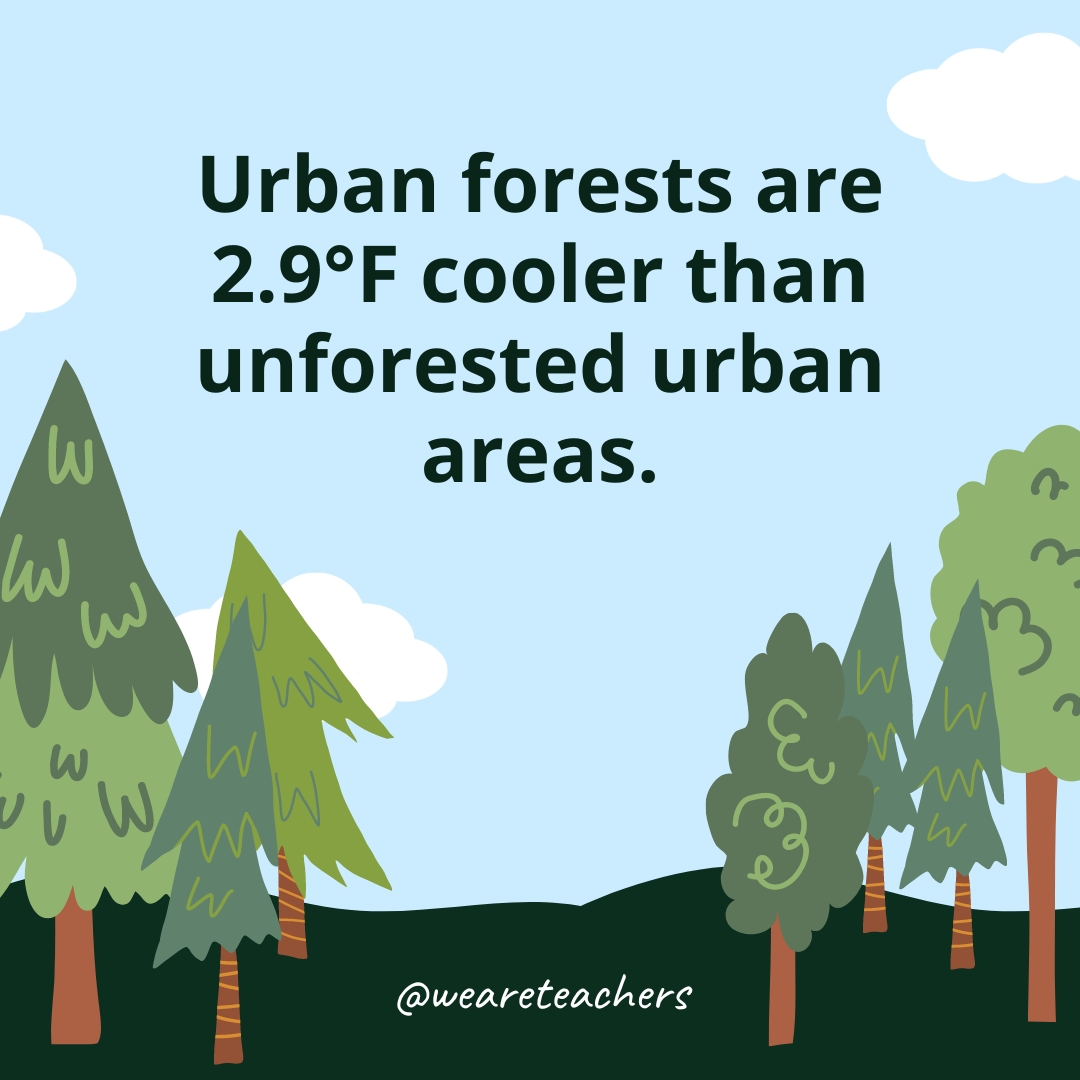
Planting trees in urban areas has numerous benefits for reducing heat islands.
The manchineel tree is toxic.
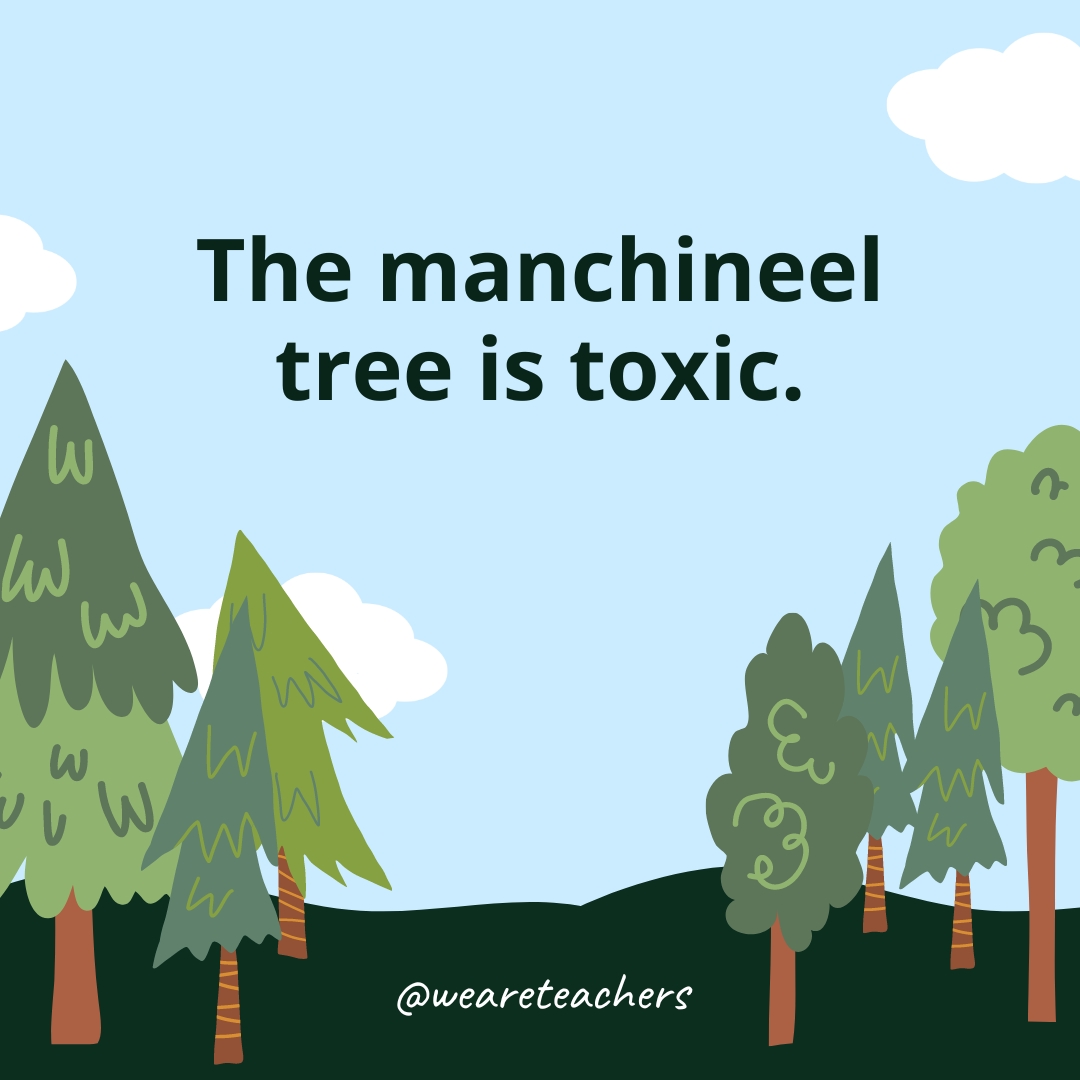
It grows in tropical regions of the Americas and produces a white sap that can burn skin, sting eyes, and strip paint from cars. It’s been called the “little apple of death” because eating its fruit could cause stomach bleeding and shock.
The Pando aspen grove is the world’s oldest living organism.
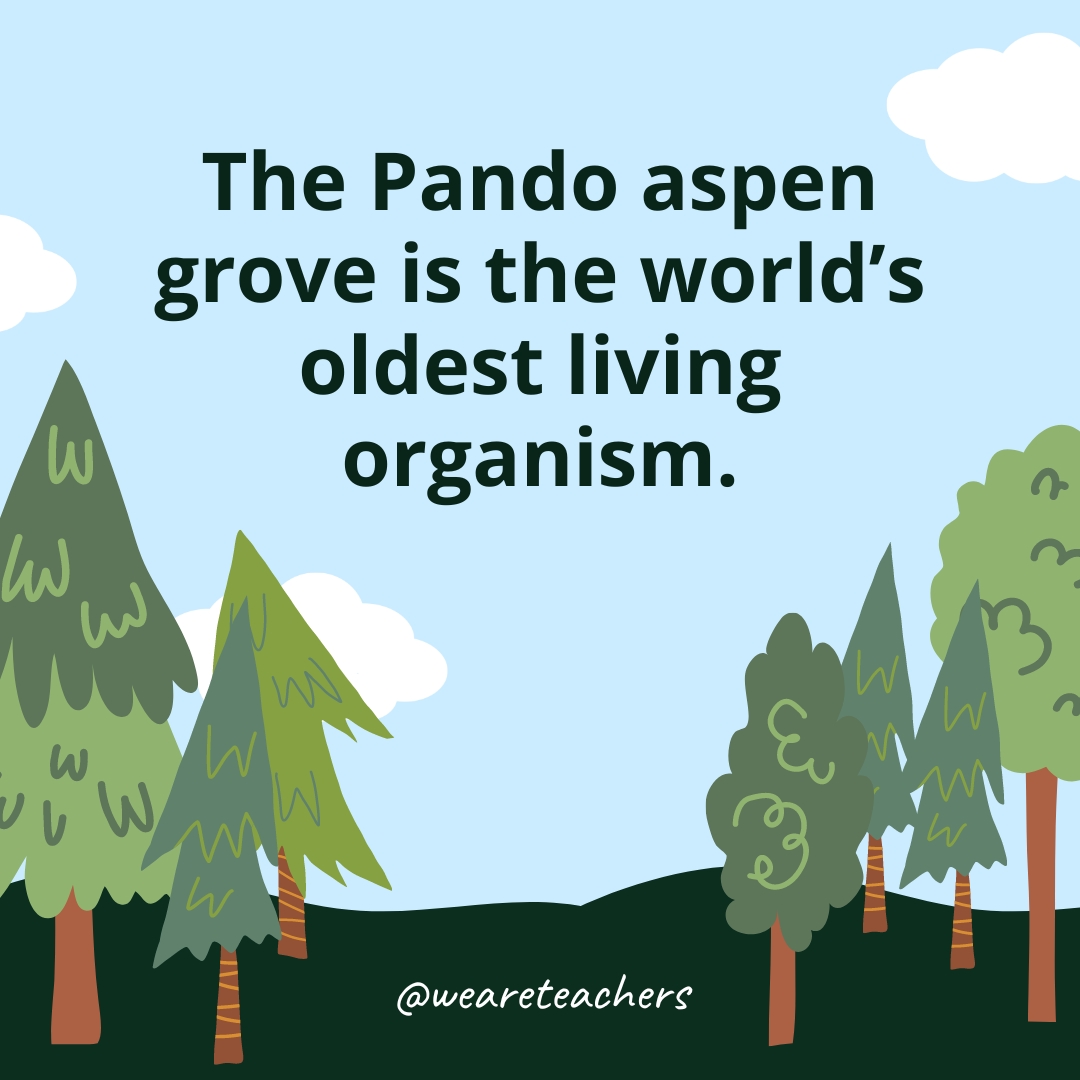
A group of quaking aspen trees called Pando is connected by a root network. It was formed 80,000 years ago and weighs over 6,600 tons.
It takes 30 seconds to walk around the world’s stoutest tree.
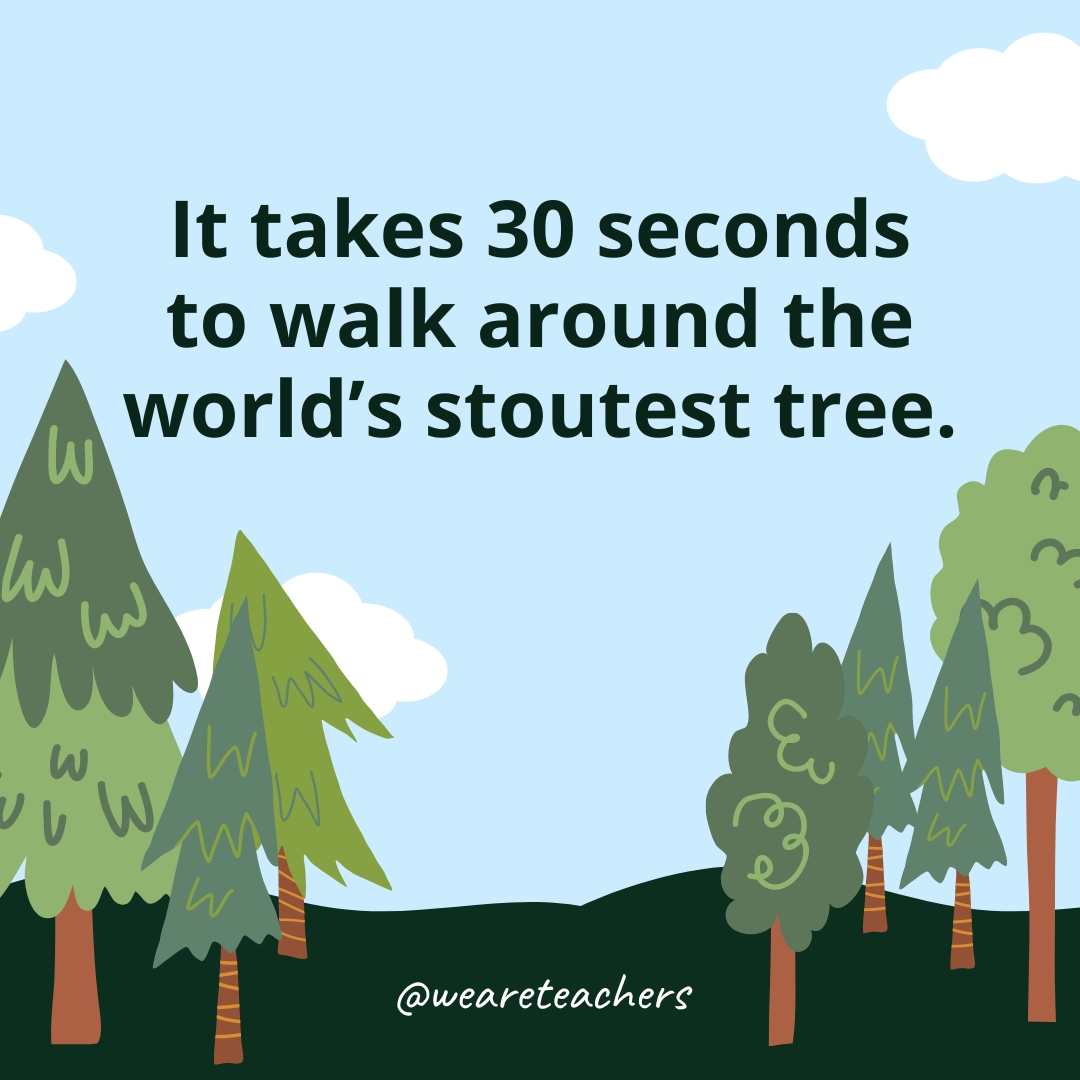
In Oaxaca, Mexico, the Tree of Tule has a circumference of 42 meters (138 feet), which would require roughly 105 men standing shoulder-to-shoulder to cover its base.
There is a debate over which tree is the oldest in the world.
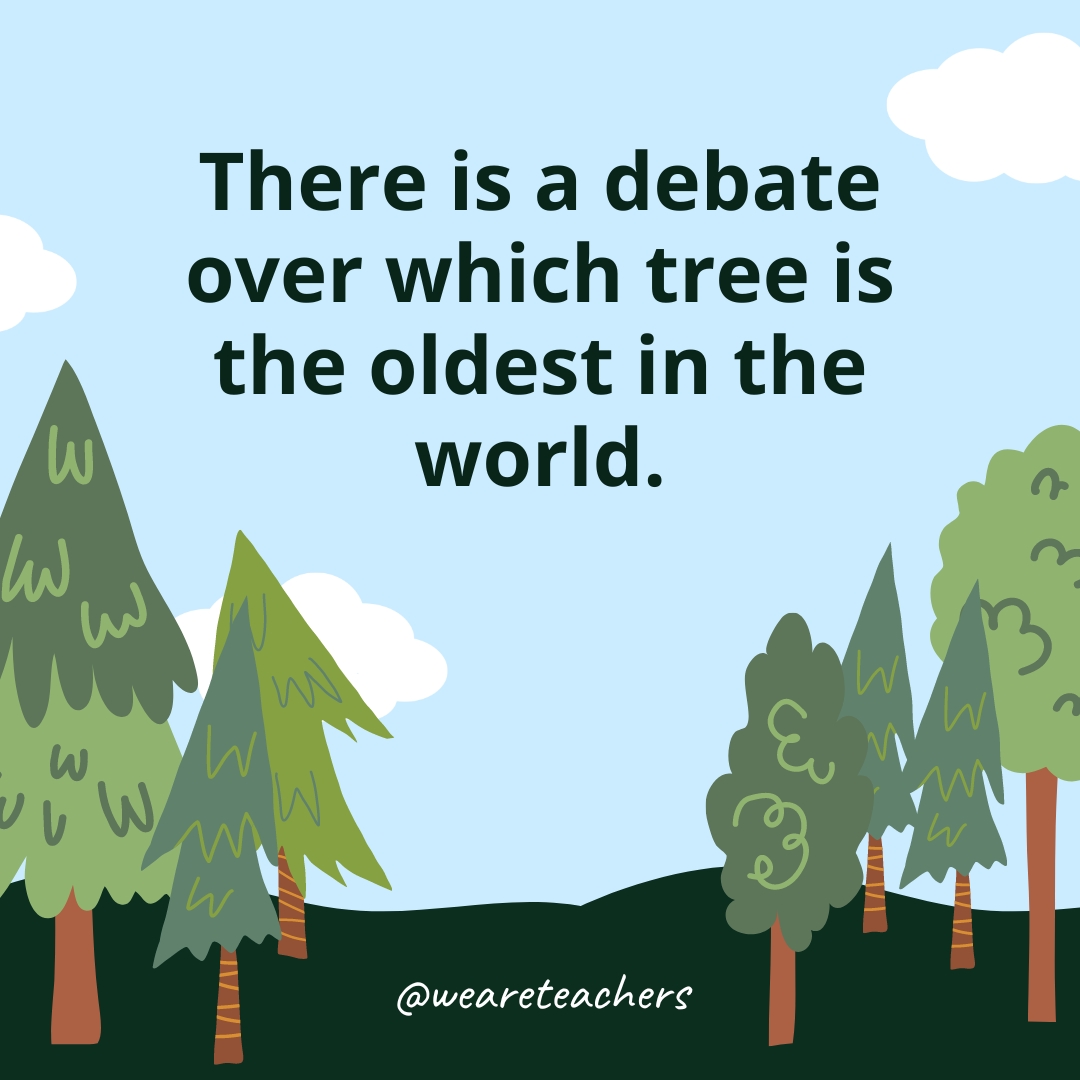
There is debate about whether Methuselah, a 4,853-year-old bristlecone pine in California, or the Alerce Milenario/Gran Abuelo (great grandfather in Spanish), a Patagonian cypress, is the oldest tree. Gran Abuelo is thought to be about 500 years older than Methuselah, but the methods of capturing the age are up for debate.
Seeing trees helps people heal faster.
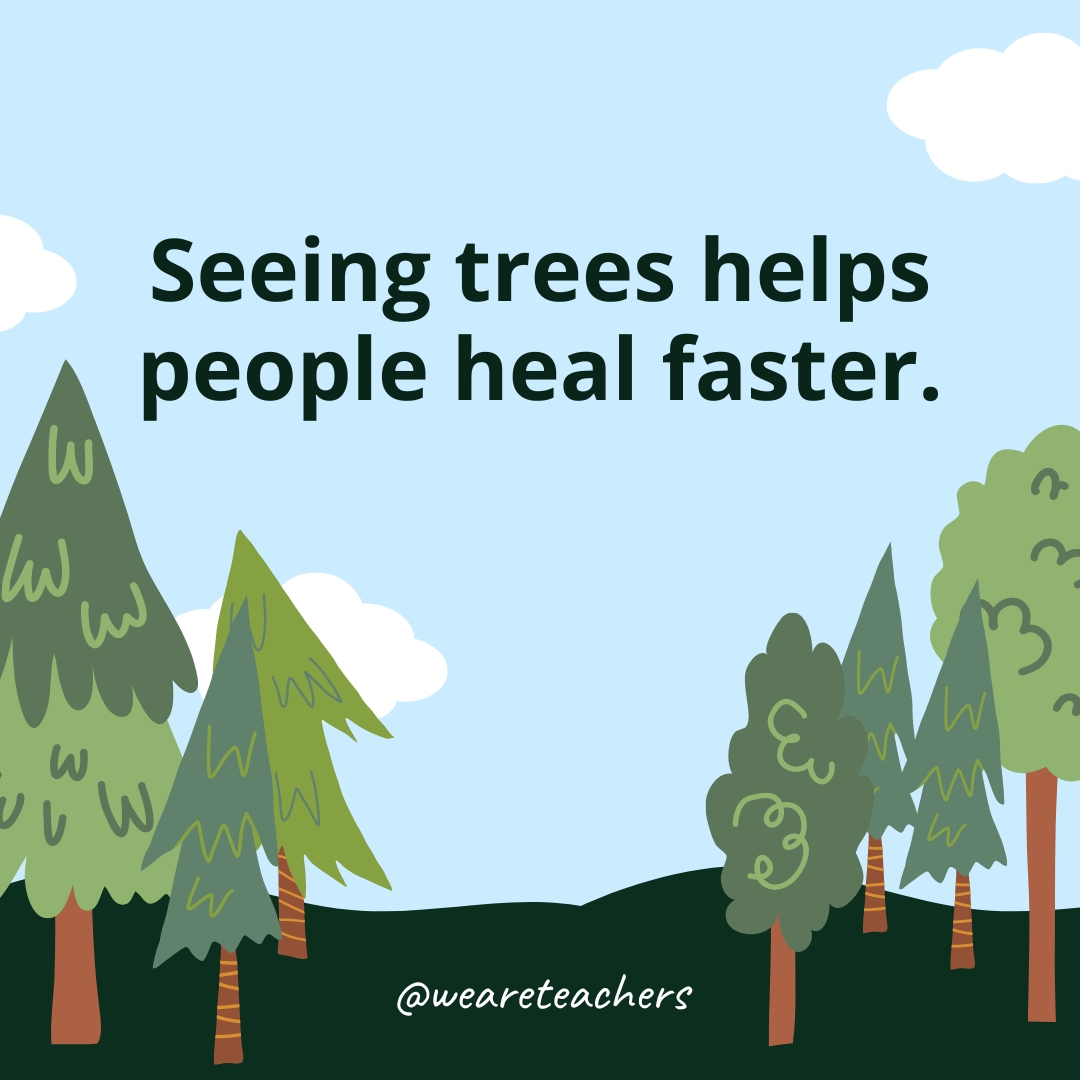
People who saw a tree outside their hospital window spent less time in the hospital compared to people who didn’t have a view of trees.
There is no such thing as a tree species having deep or shallow root systems.
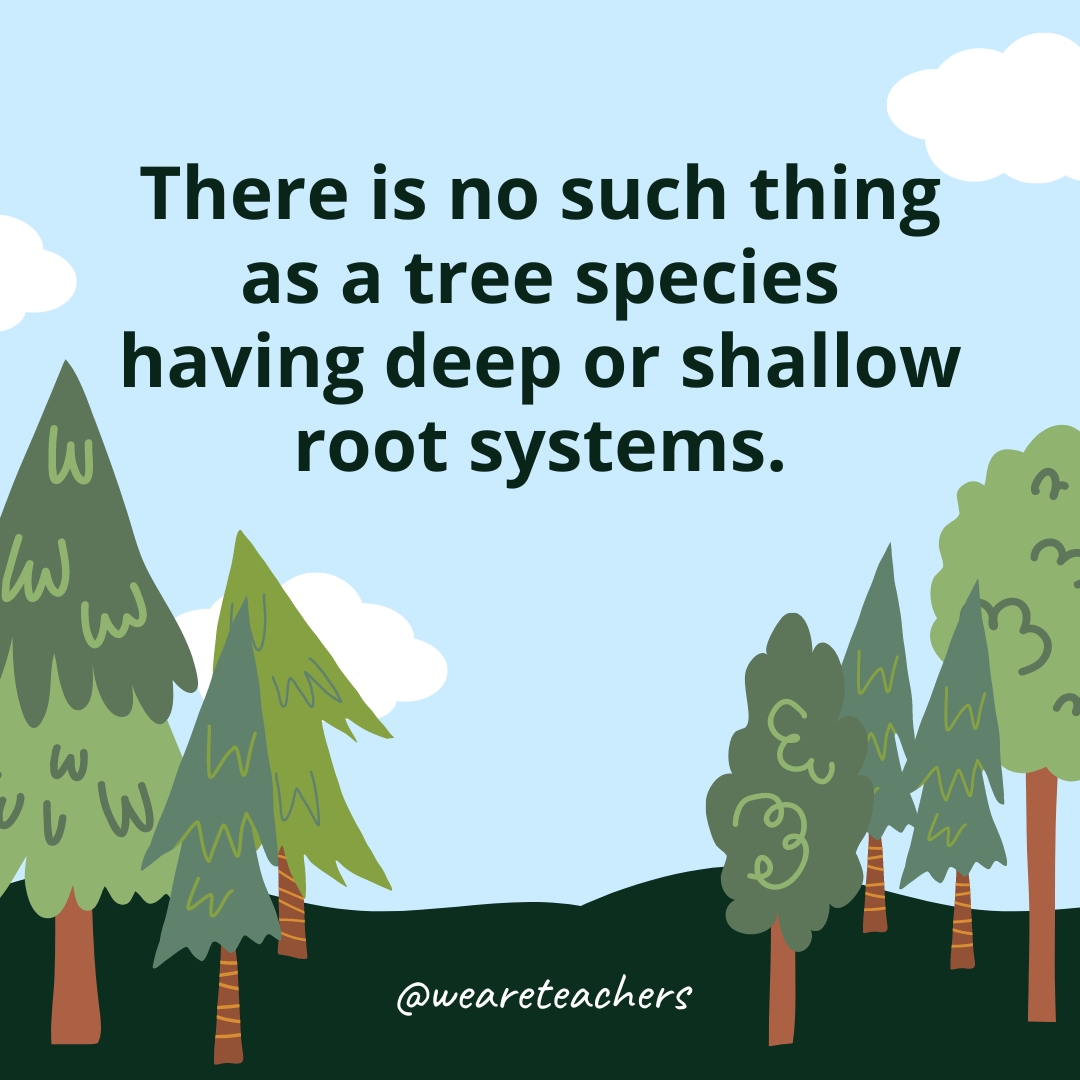
Each tree will develop its roots depending on where it is planted.

